|
|
|||||||
|
HOME
|
US Navy -
ships
|
US Navy - air
units
|
USMC - air
units
|
International
Navies
|
Weapon Systems
|
Special Reports |
|||||||
|
|
|||||||
|
|
|||||||
US Marine Corps - Marine Medium Tiltrotor Squadron 264VMM-264 'Black Knights' |
|||||||
|
|
|||||||
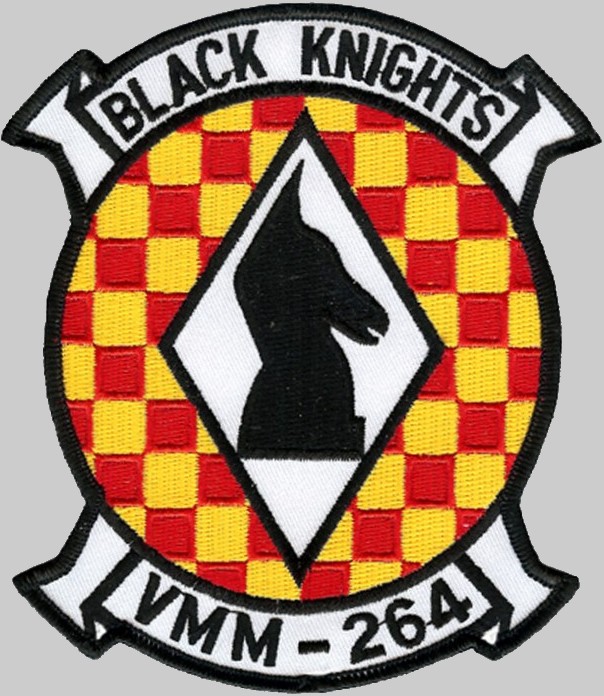 |
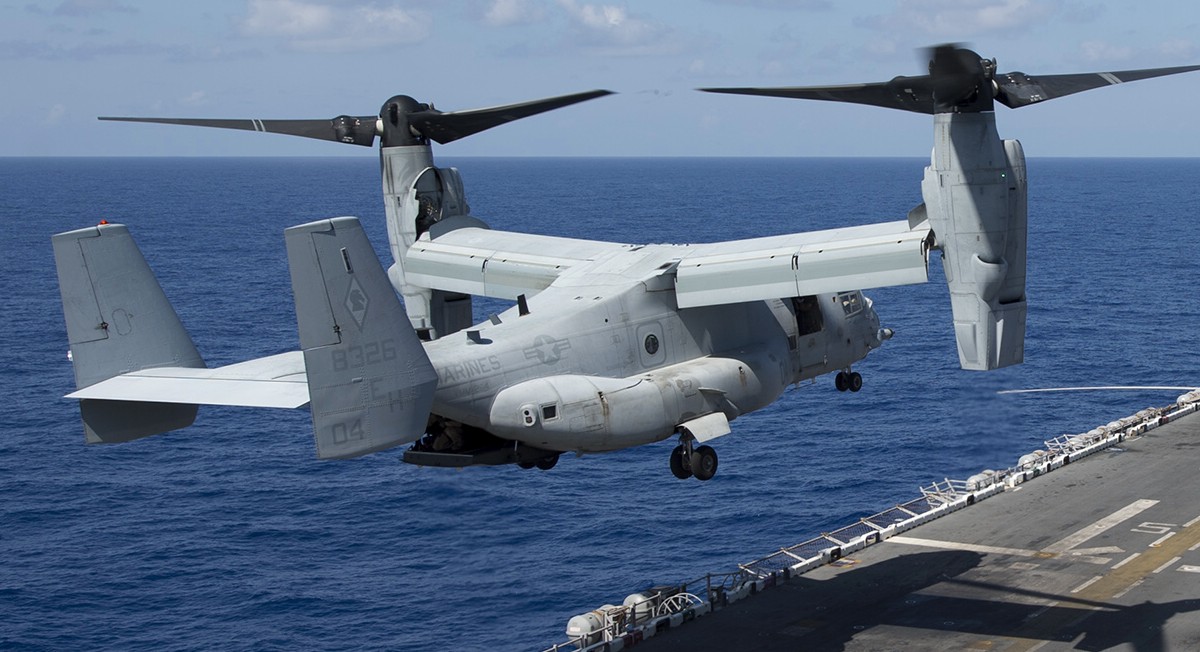 |
||||||
|
|
|||||||
|
|||||||
|
|
|||||||
images |
|||||||
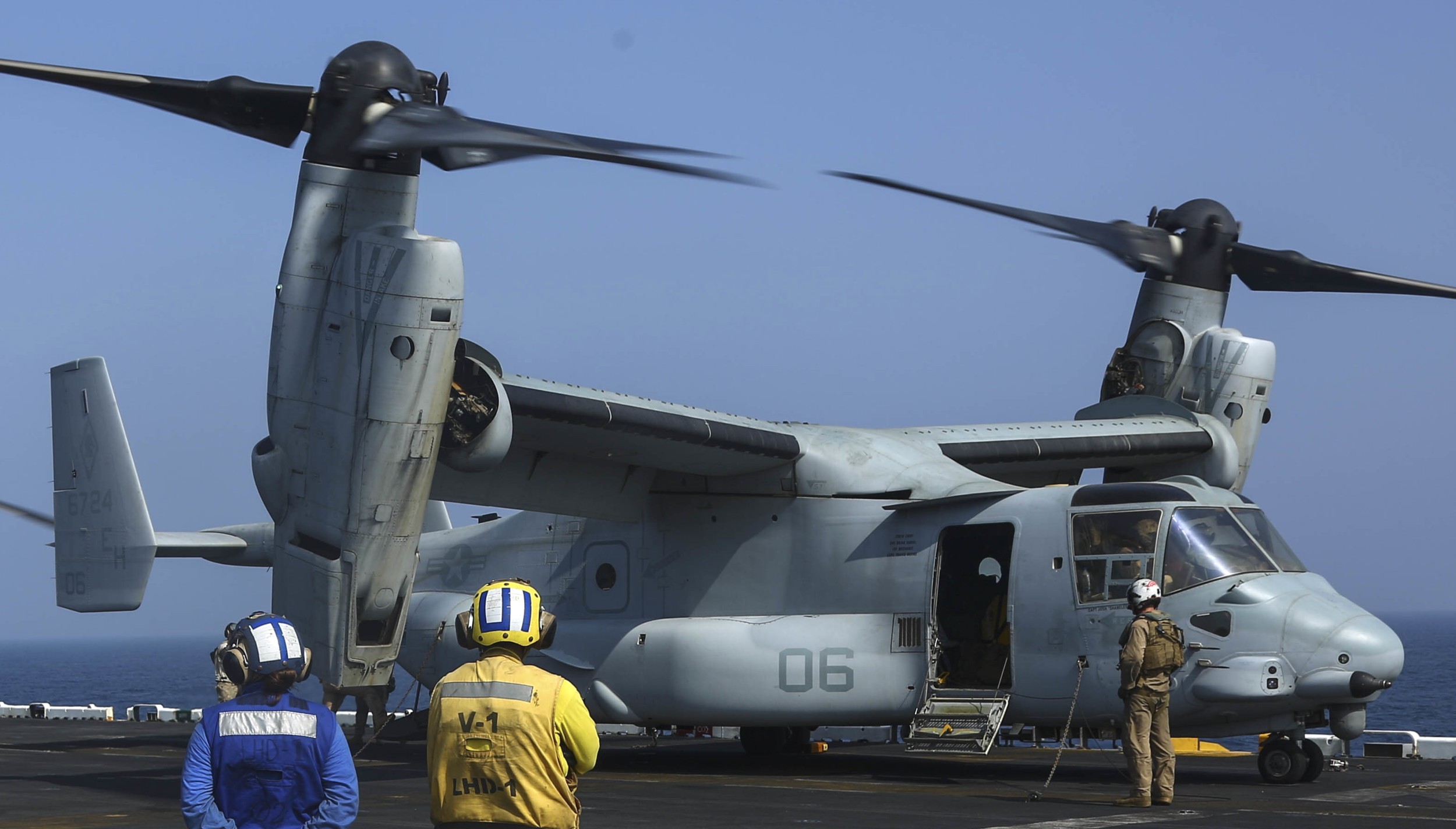 MV-22B Osprey (VMM-264) aboard USS Wasp (LHD 1) - November 2016 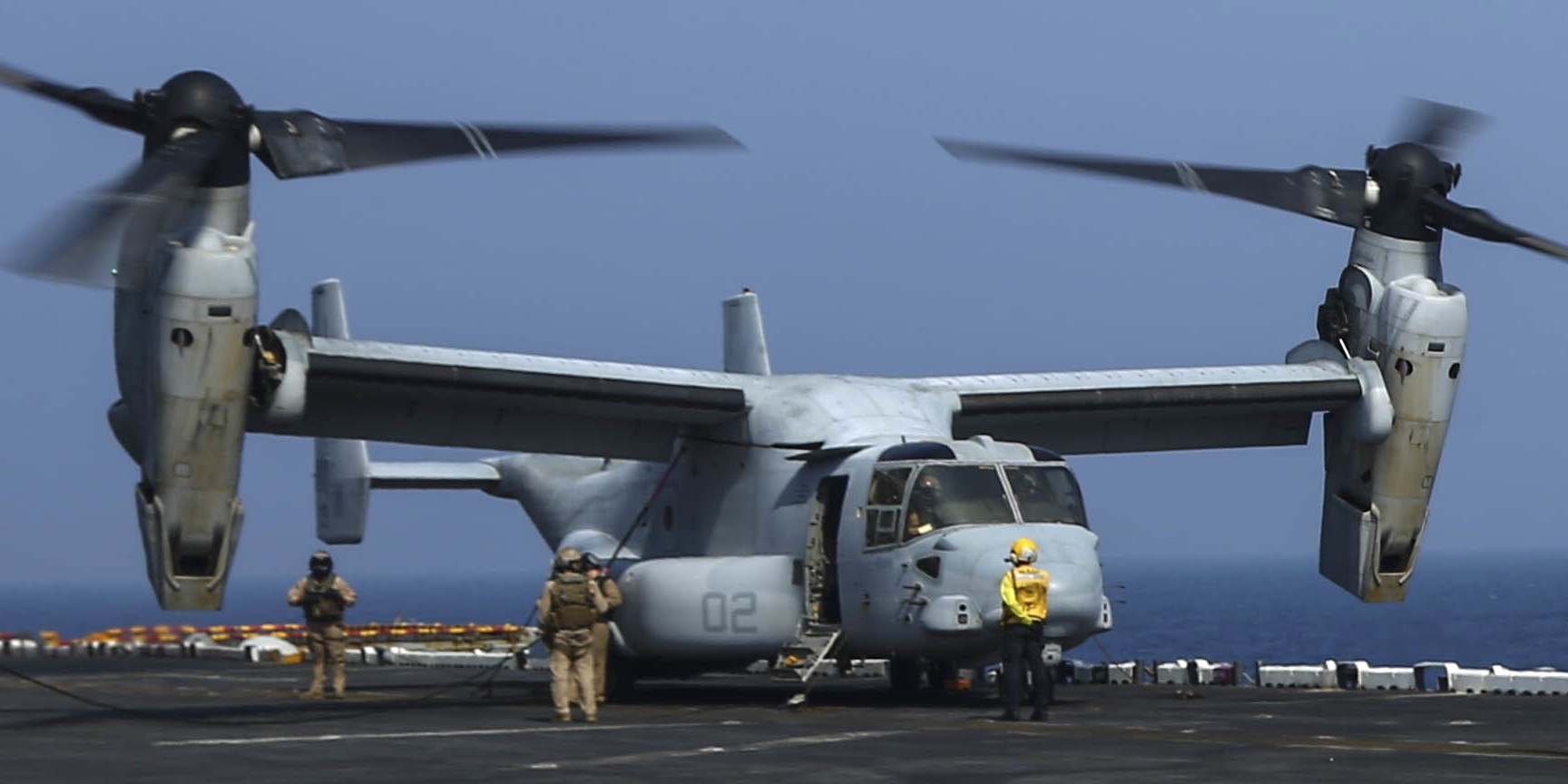 MV-22B Osprey (VMM-264) aboard USS Wasp (LHD 1) - November 2016 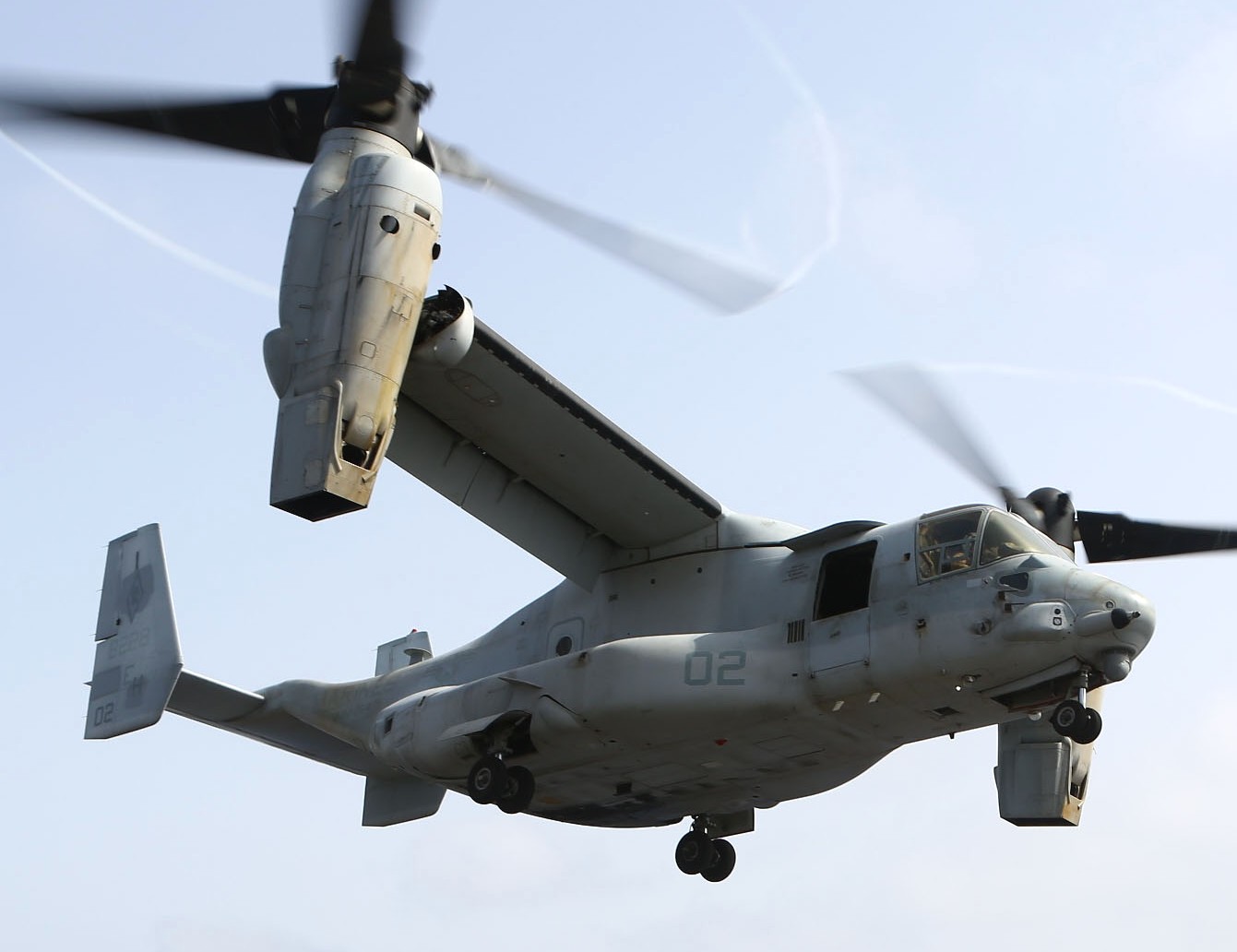 MV-22B Osprey (VMM-264) aboard USS Wasp (LHD 1) - October 2016 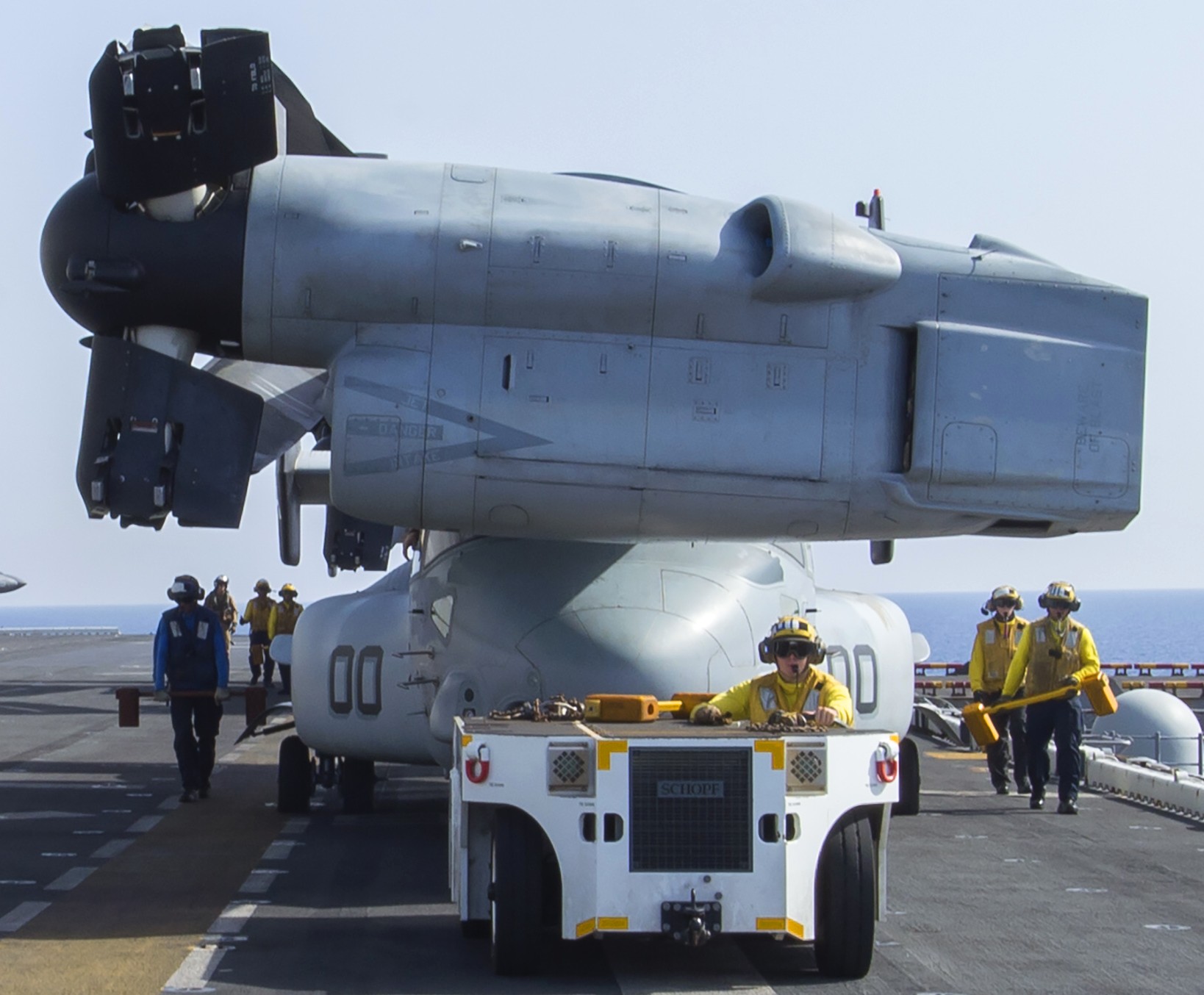 MV-22B Osprey (VMM-264) aboard USS Wasp (LHD 1) - October 2016  MV-22B Osprey (VMM-264) aboard USS Wasp (LHD 1) - September 2016 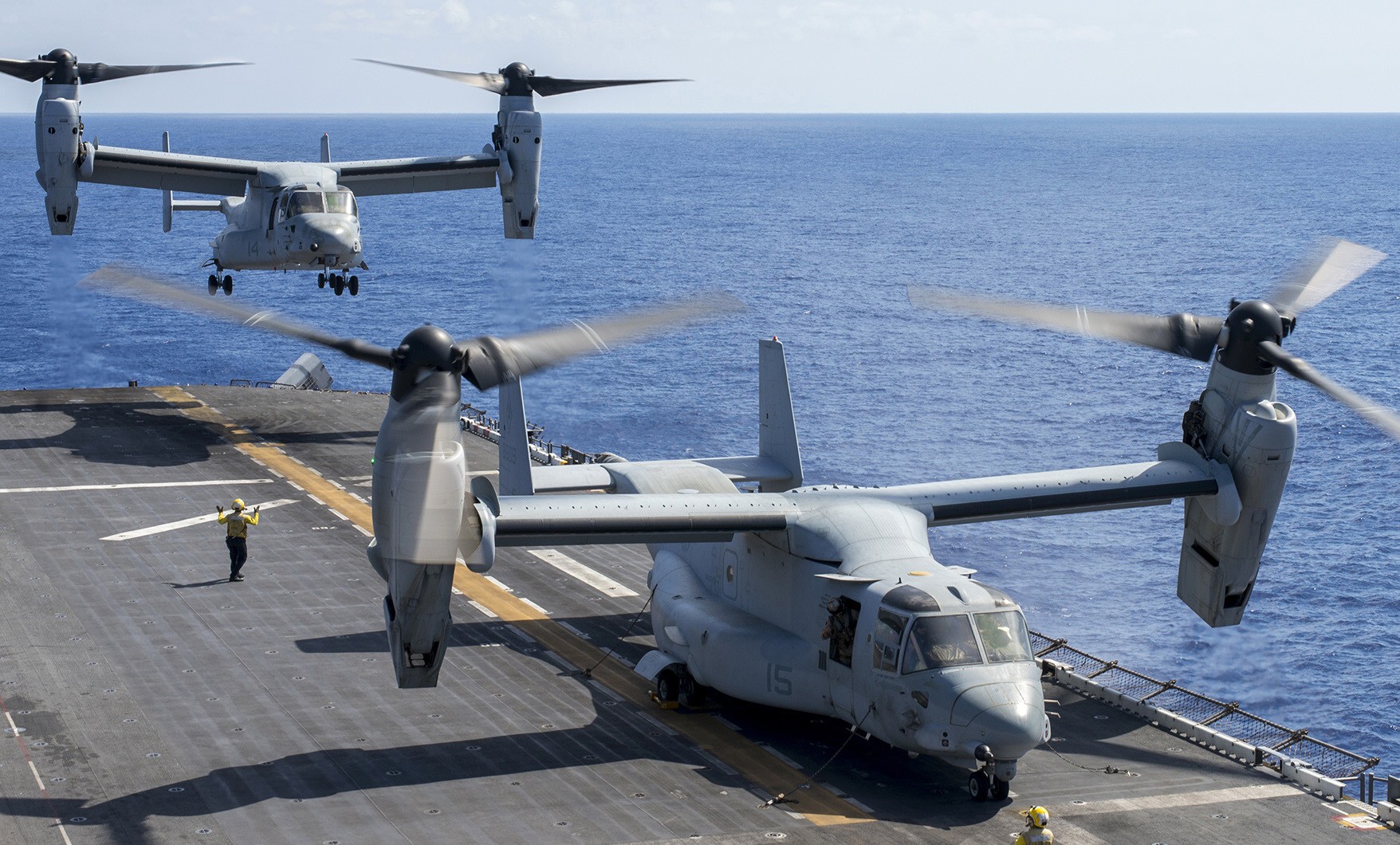 MV-22B Osprey (VMM-264) aboard USS Wasp (LHD 1) - September 2016 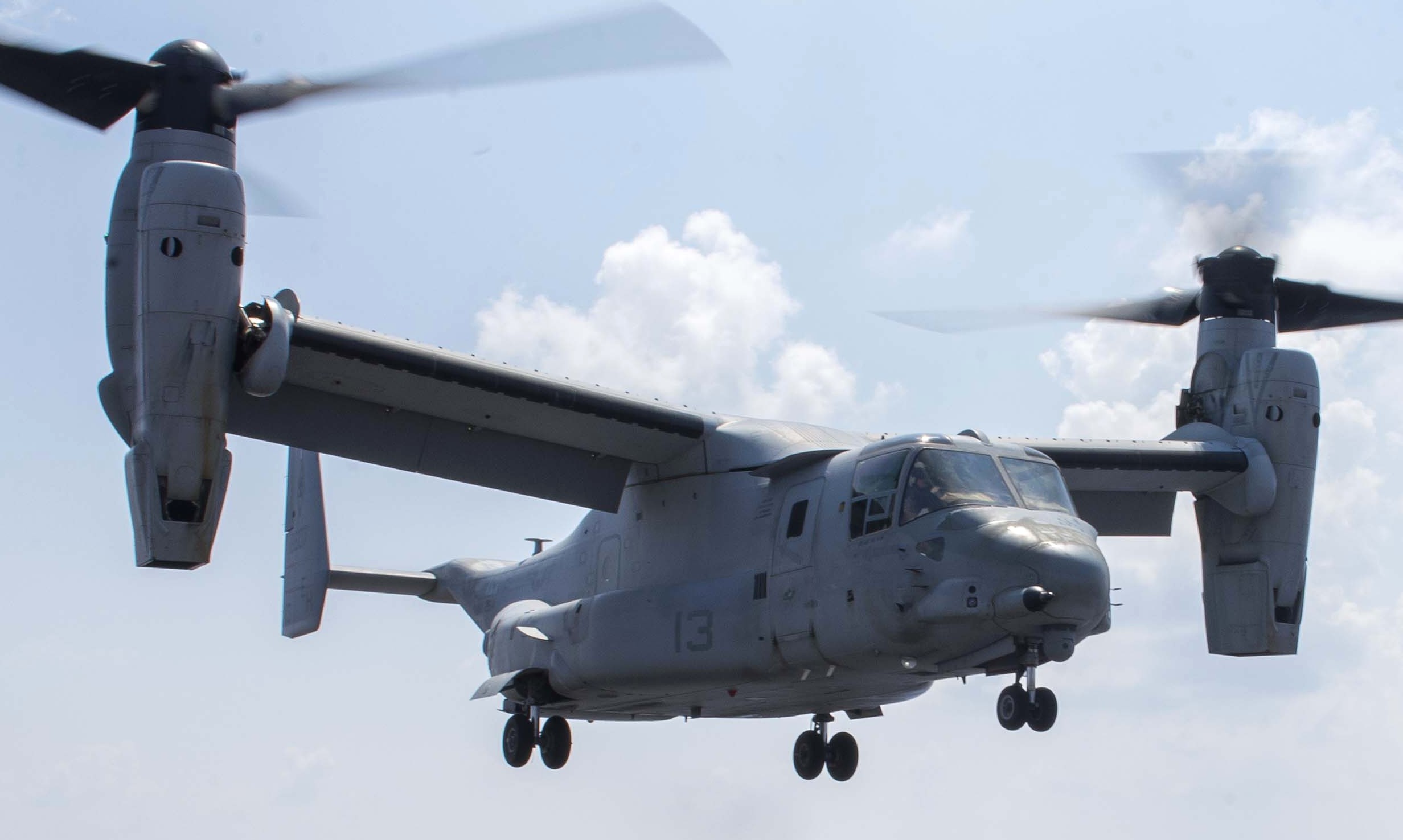 MV-22B Osprey (VMM-264) aboard USS Wasp (LHD 1) - September 2016 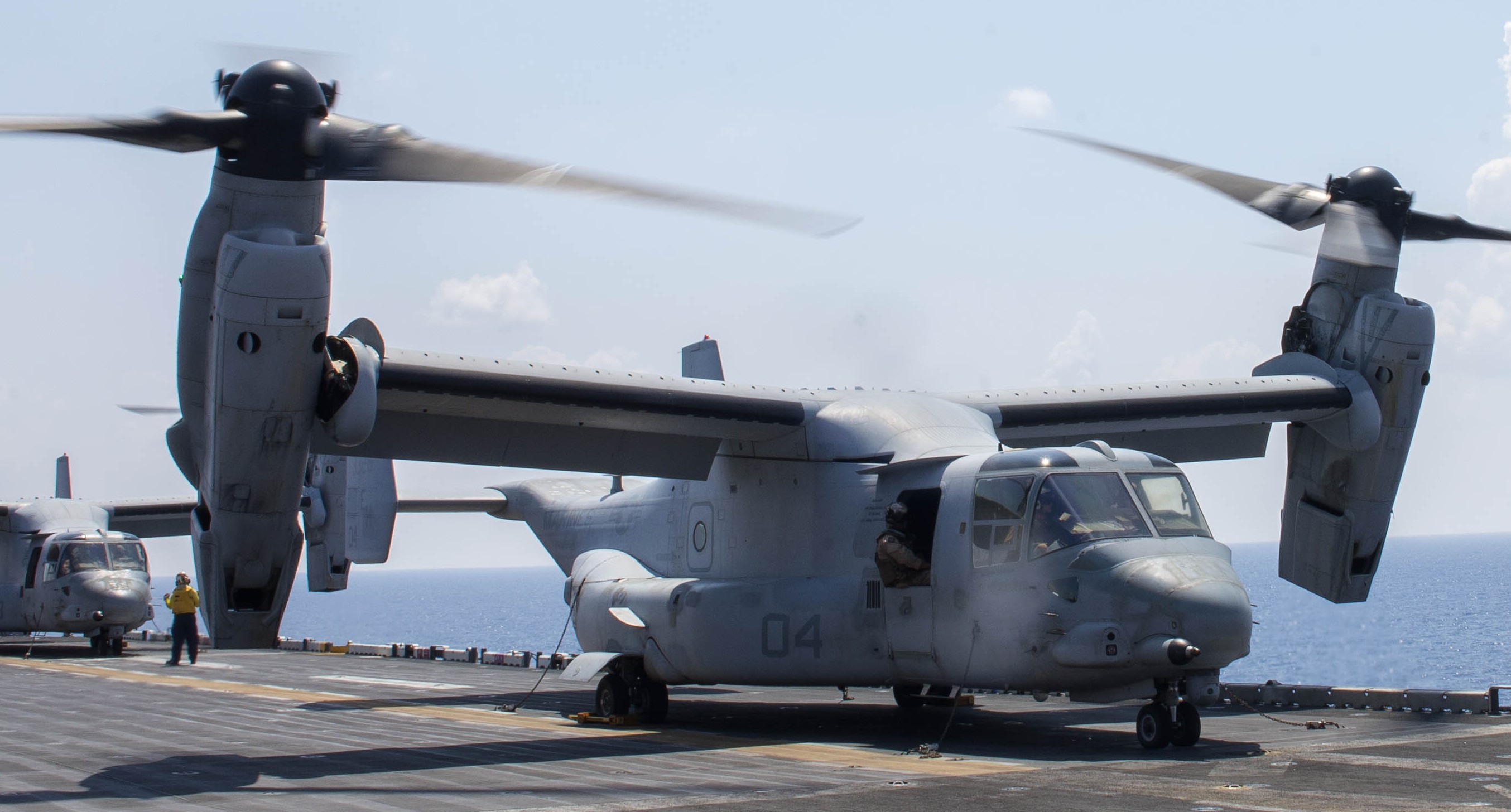 MV-22B Osprey (VMM-264) aboard USS Wasp (LHD 1) - September 2016 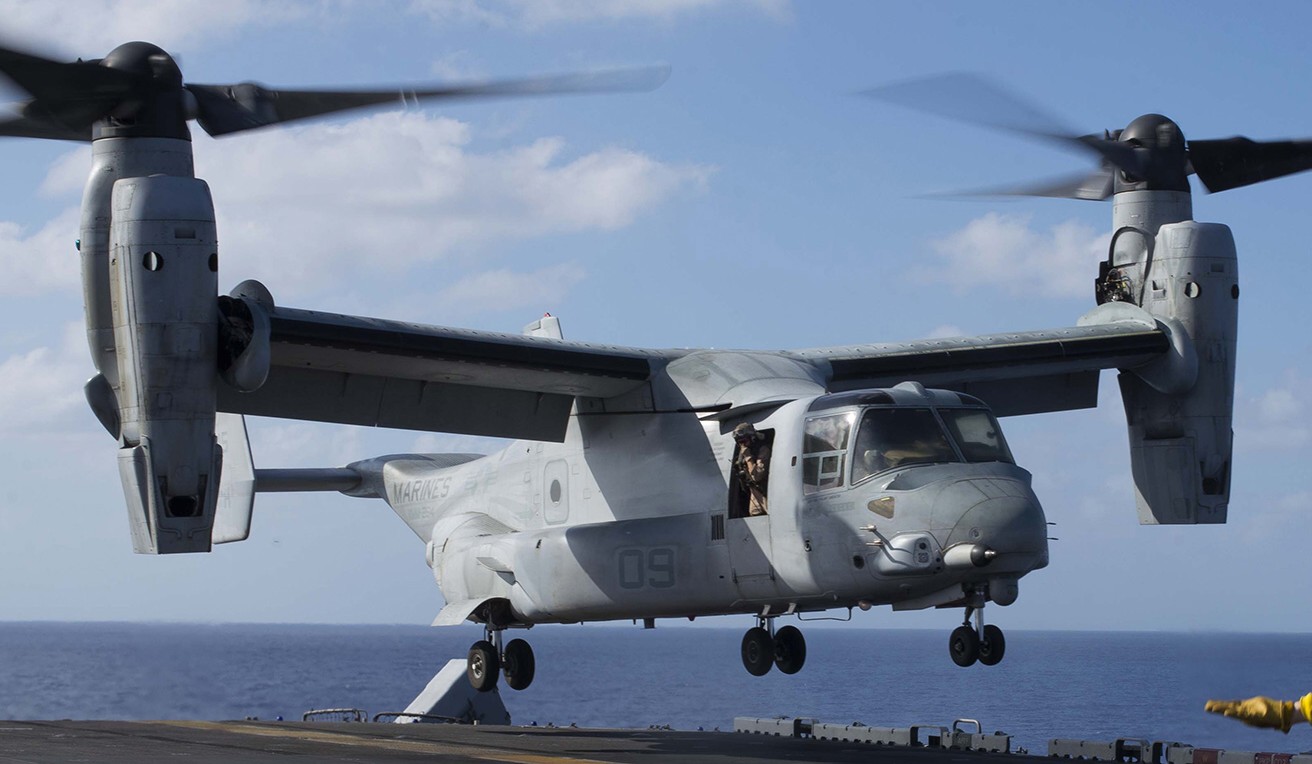 MV-22B Osprey (VMM-264) aboard USS Wasp (LHD 1) - August 2016 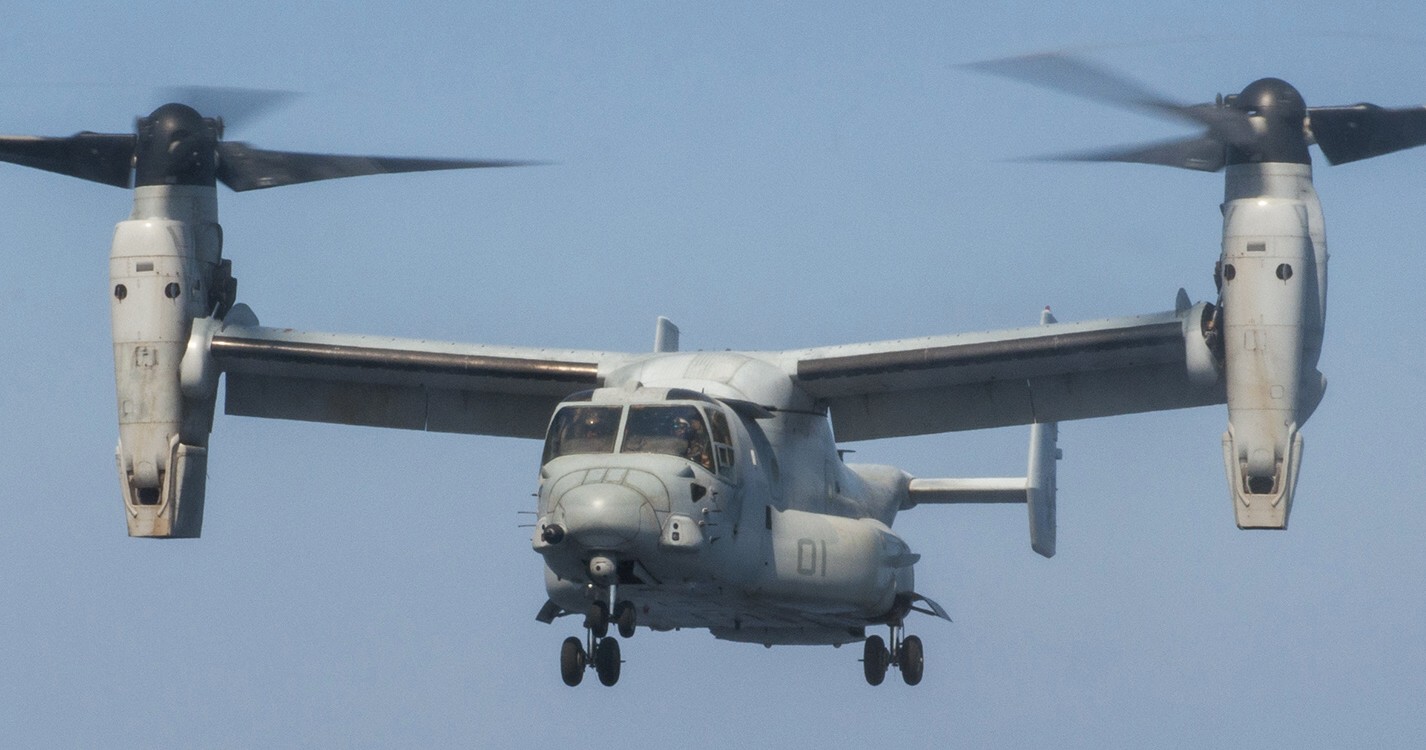 MV-22B Osprey (VMM-264) aboard USS Wasp (LHD 1) - August 2016 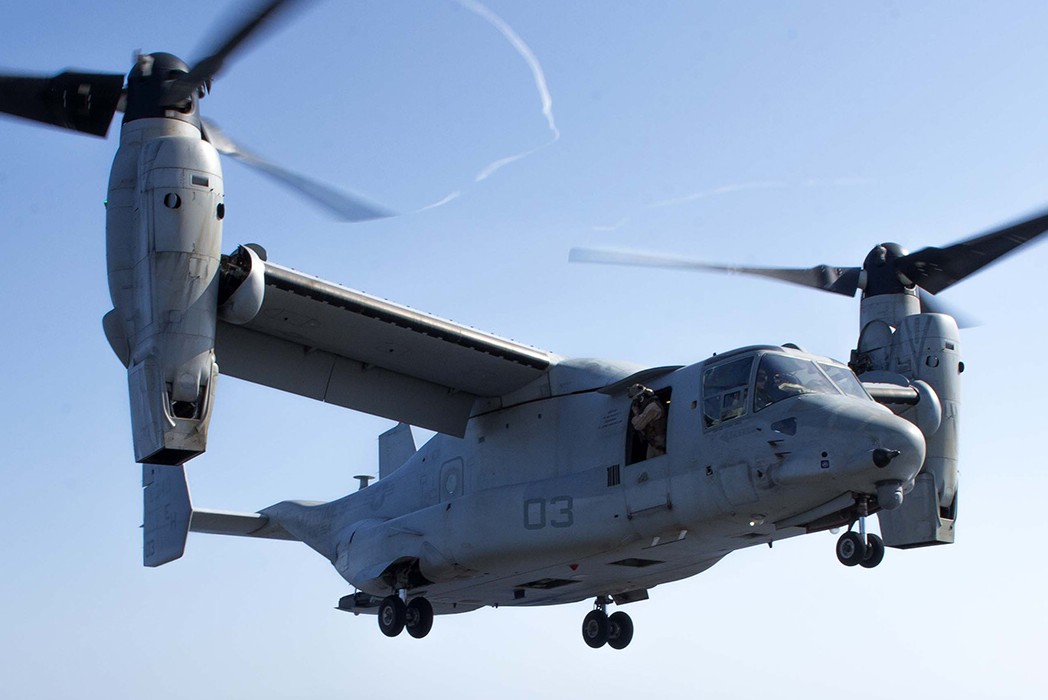 MV-22B Osprey (VMM-264) aboard USS Wasp (LHD 1) - August 2016 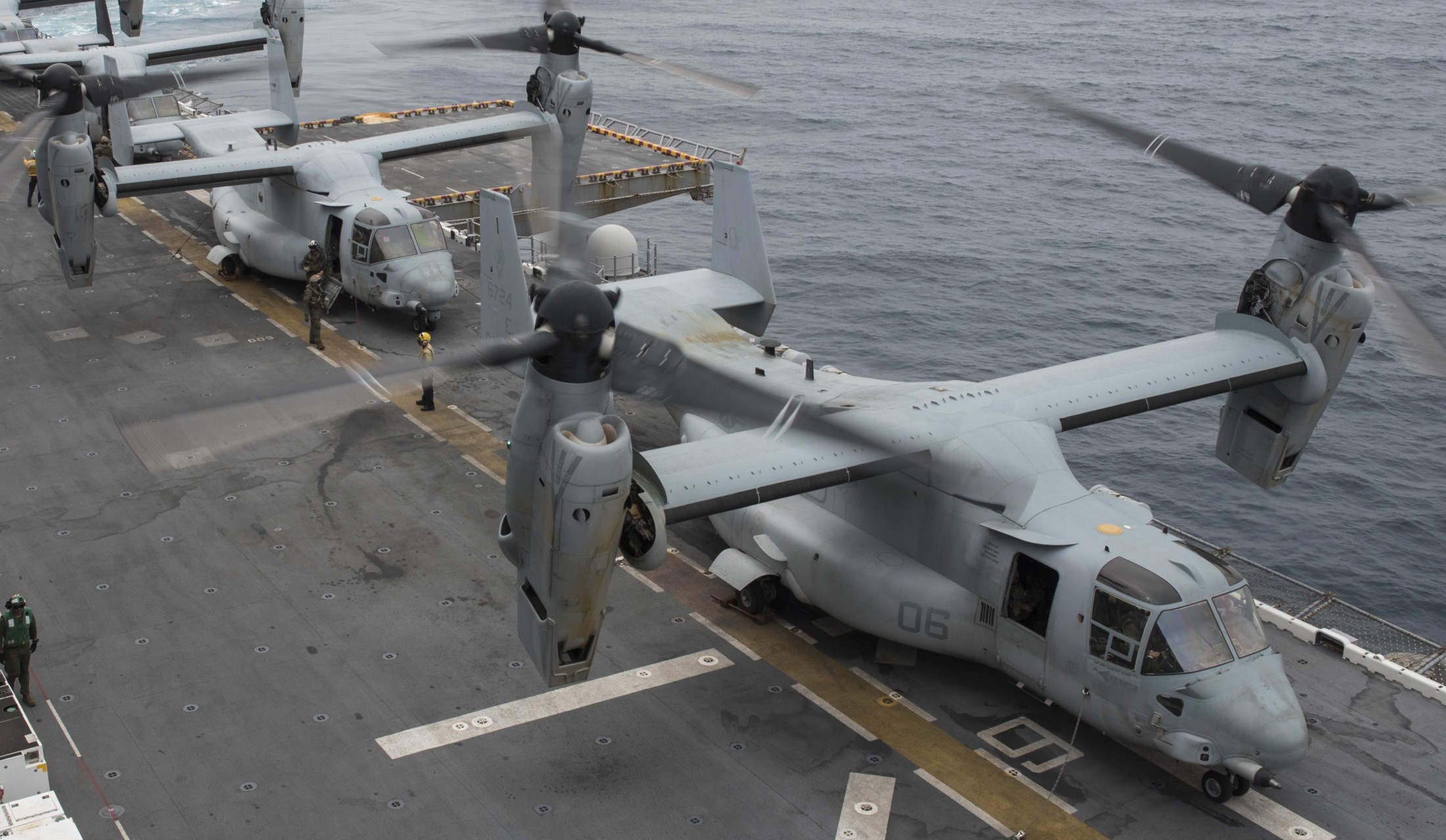 MV-22B Osprey (VMM-264) aboard USS Wasp (LHD 1) - July 2016 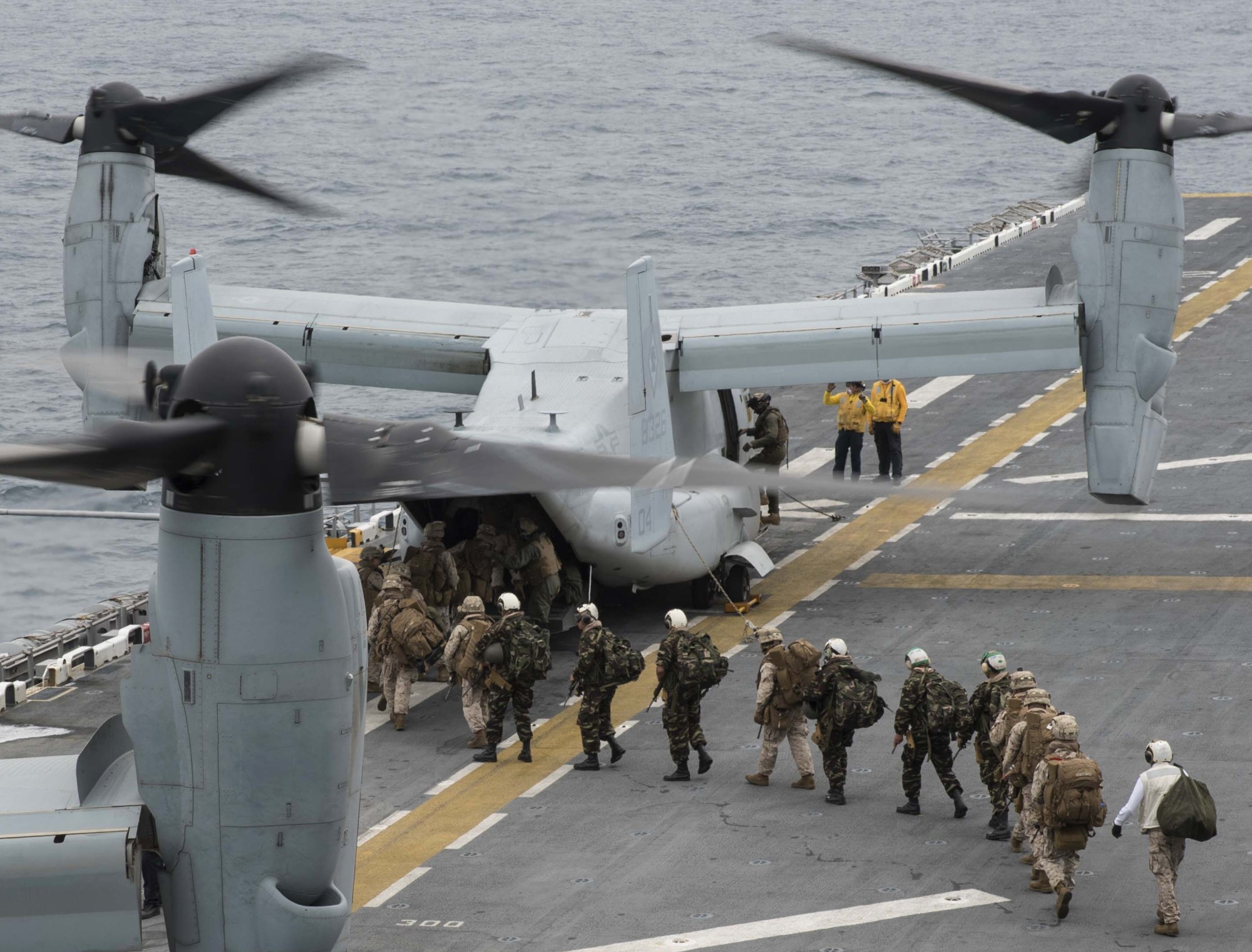 MV-22B Osprey (VMM-264) aboard USS Wasp (LHD 1) - July 2016 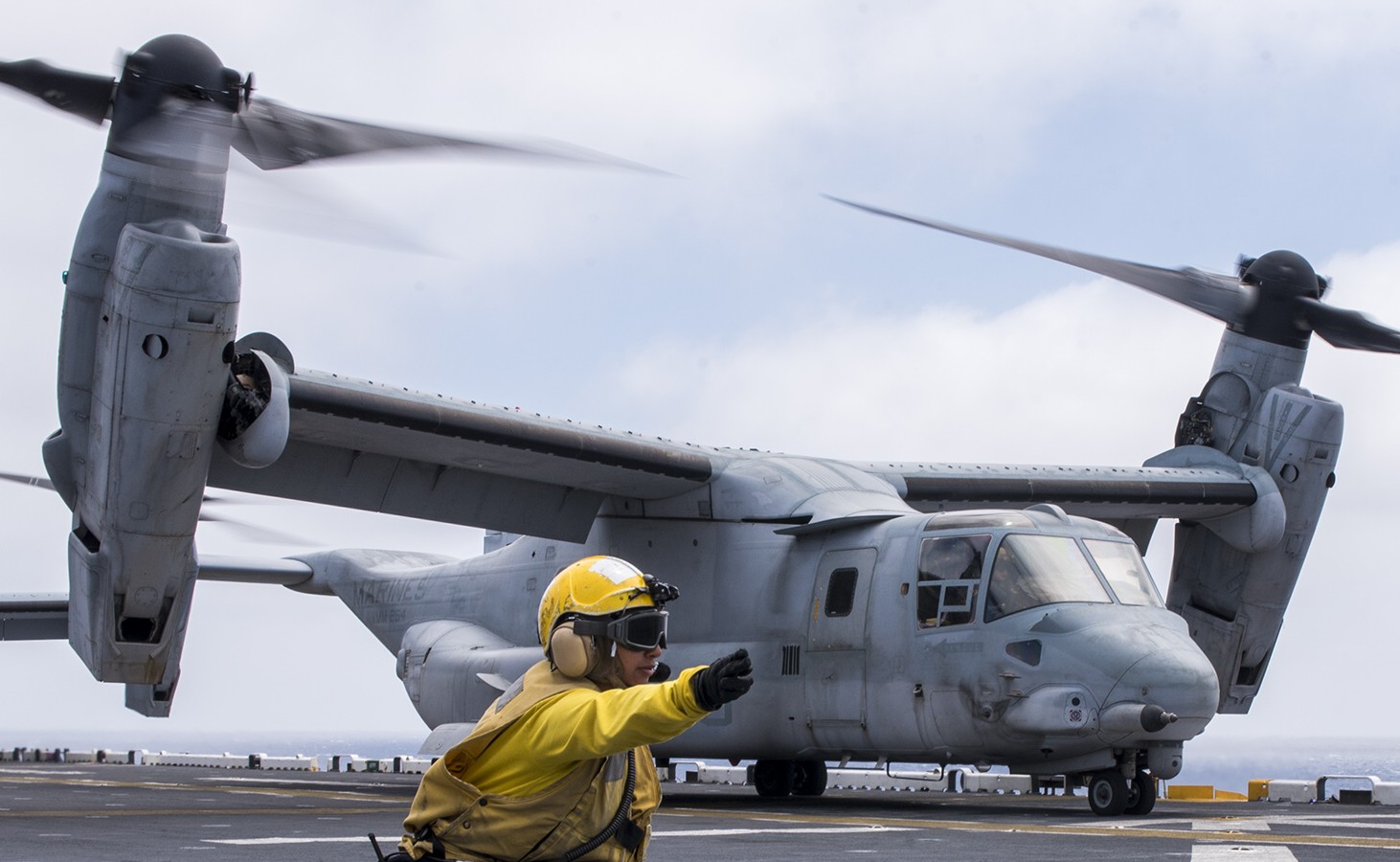 MV-22B Osprey (VMM-264) aboard USS Wasp (LHD 1) - July 2016 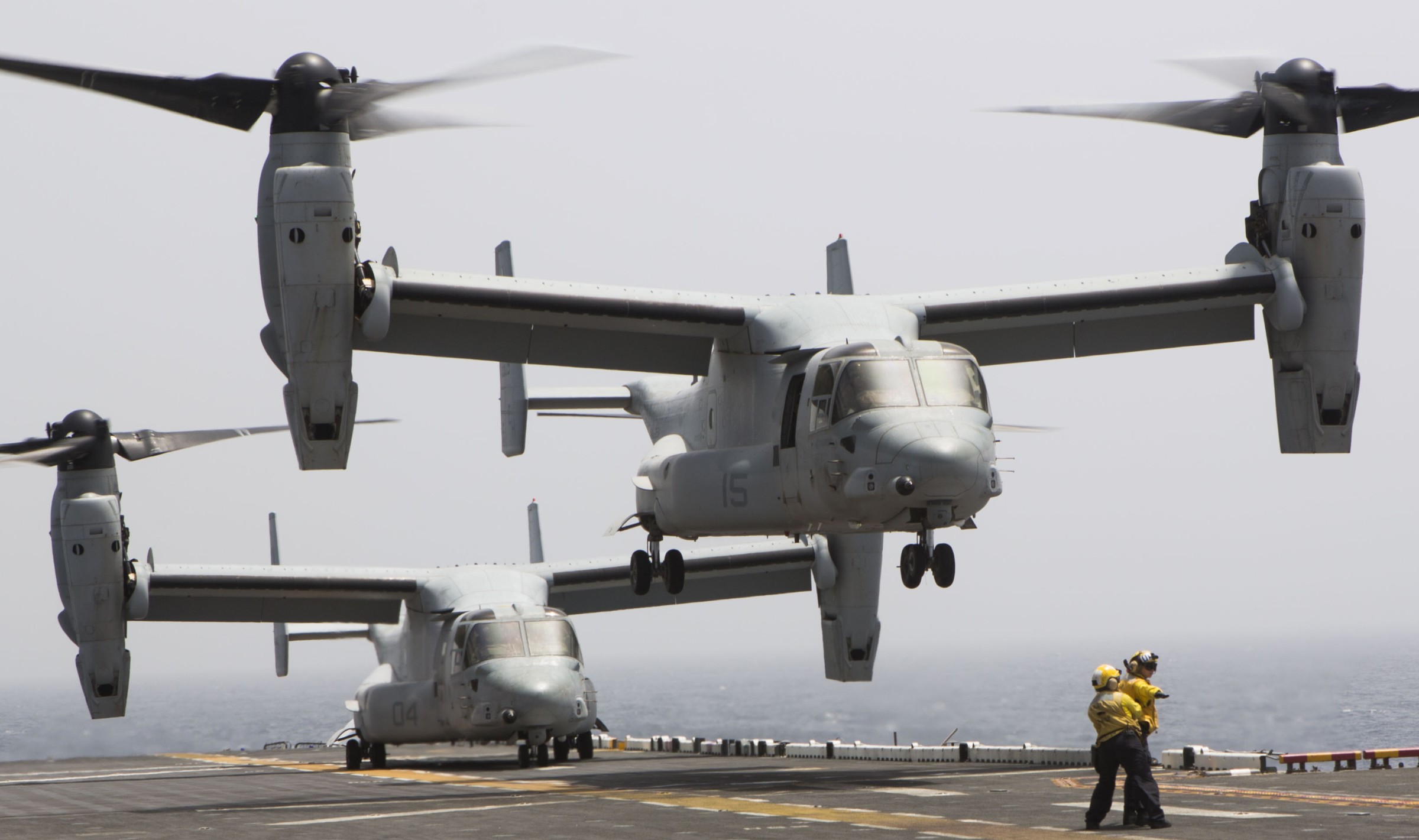 MV-22B Osprey (VMM-264) aboard USS Wasp (LHD 1) - July 2016 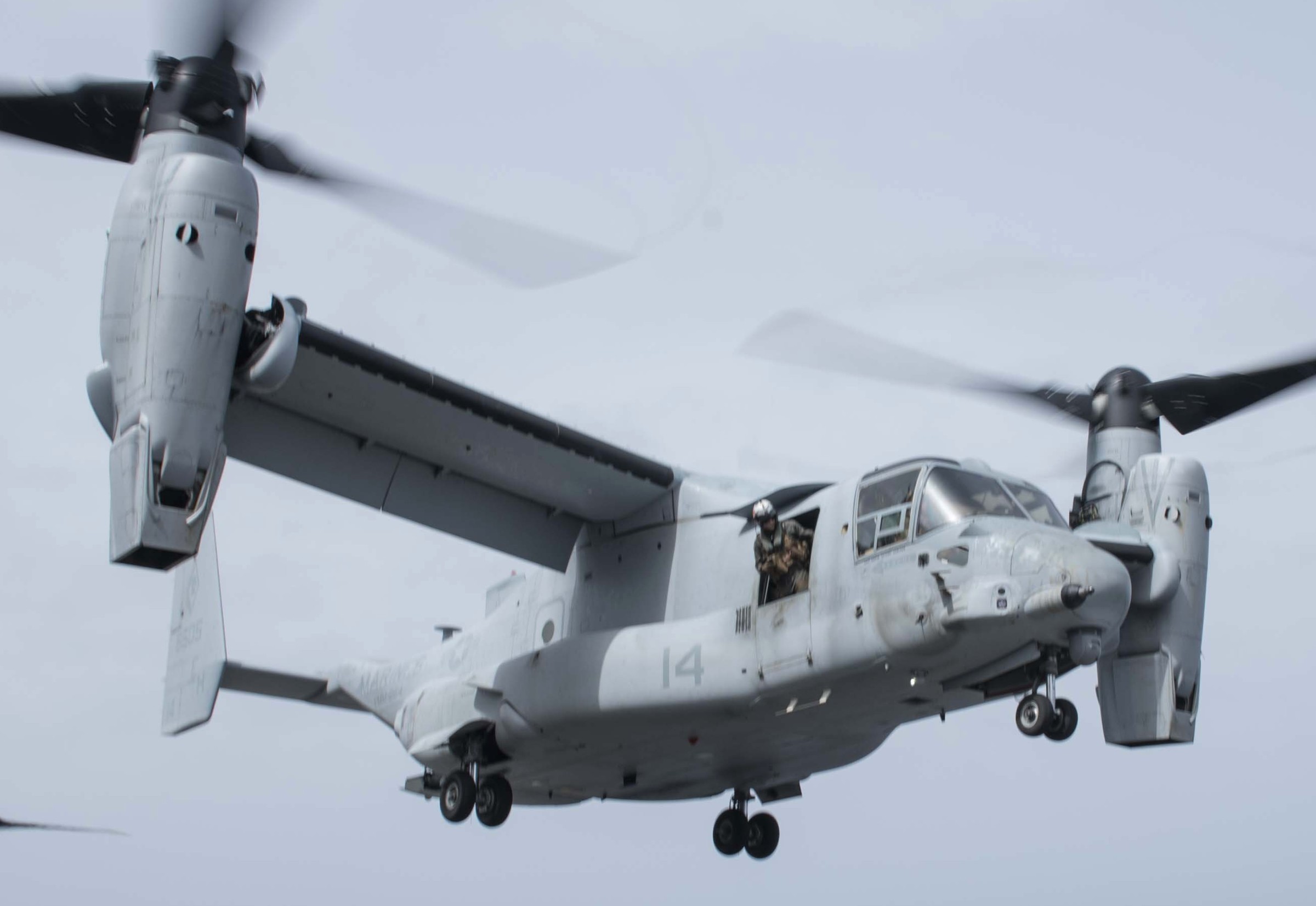 MV-22B Osprey (VMM-264) aboard USS Wasp (LHD 1) - July 2016 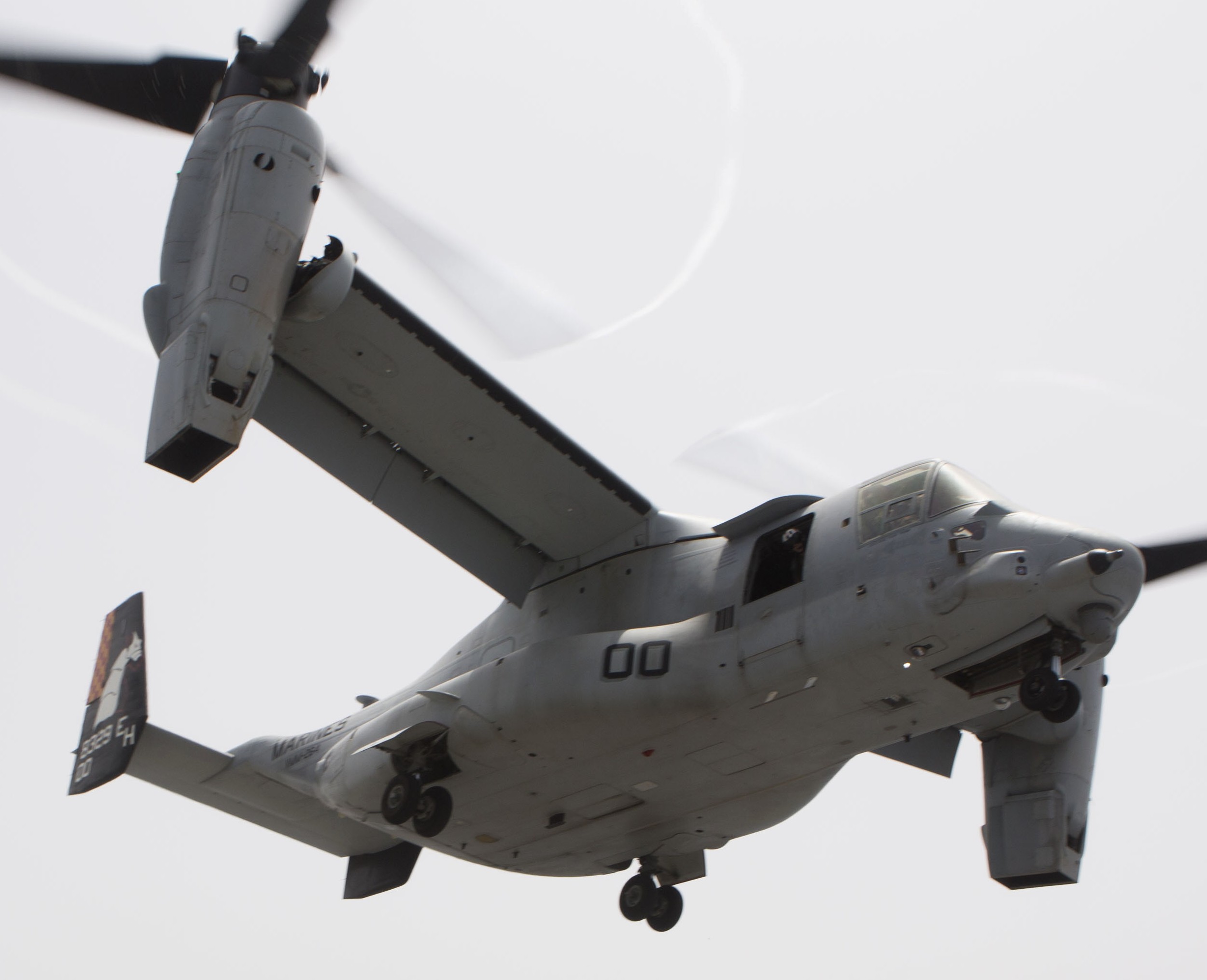 MV-22B Osprey (VMM-264) aboard USS Wasp (LHD 1) - July 2016 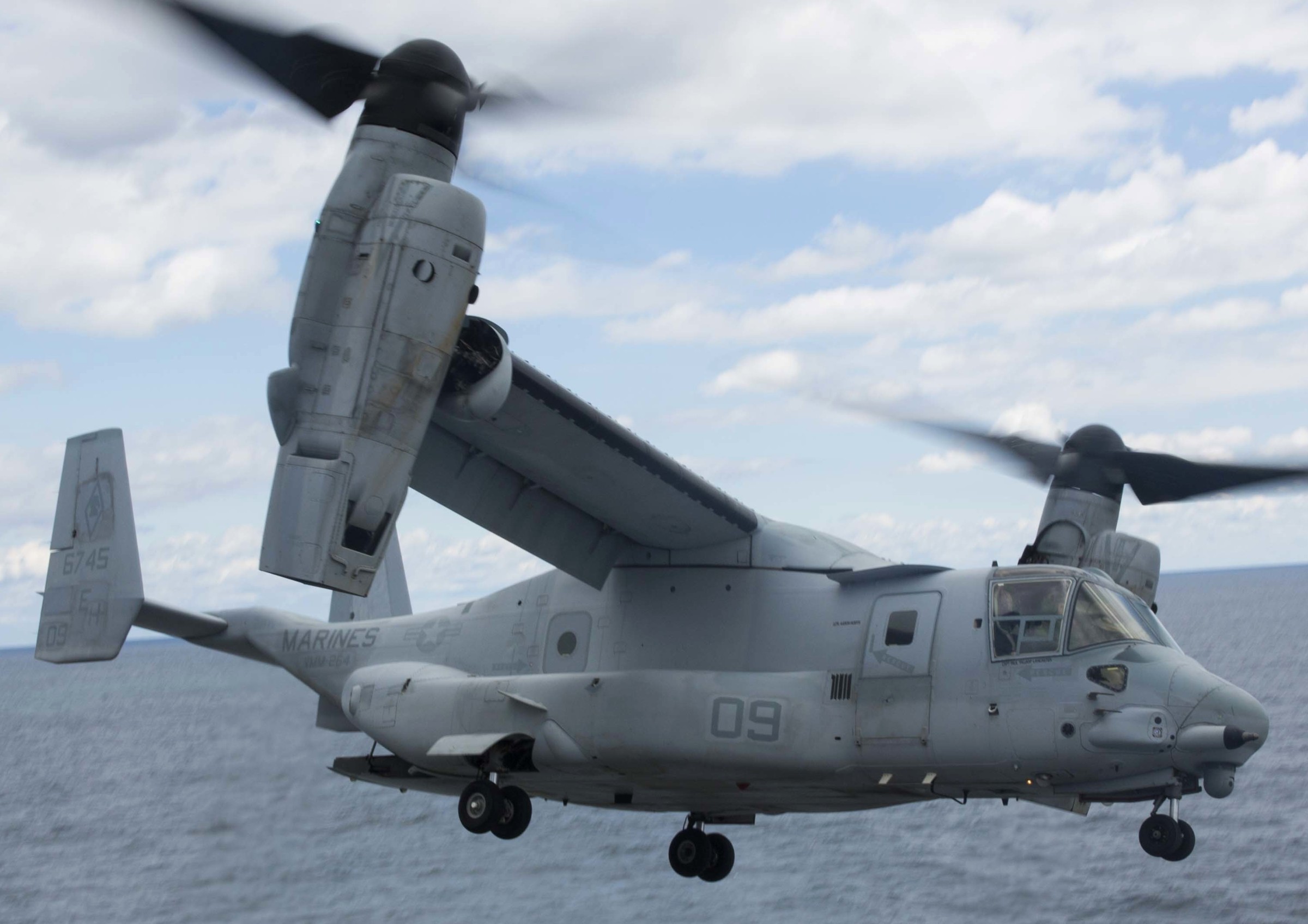 MV-22B Osprey (VMM-264) aboard USS Wasp (LHD 1) - May 2016 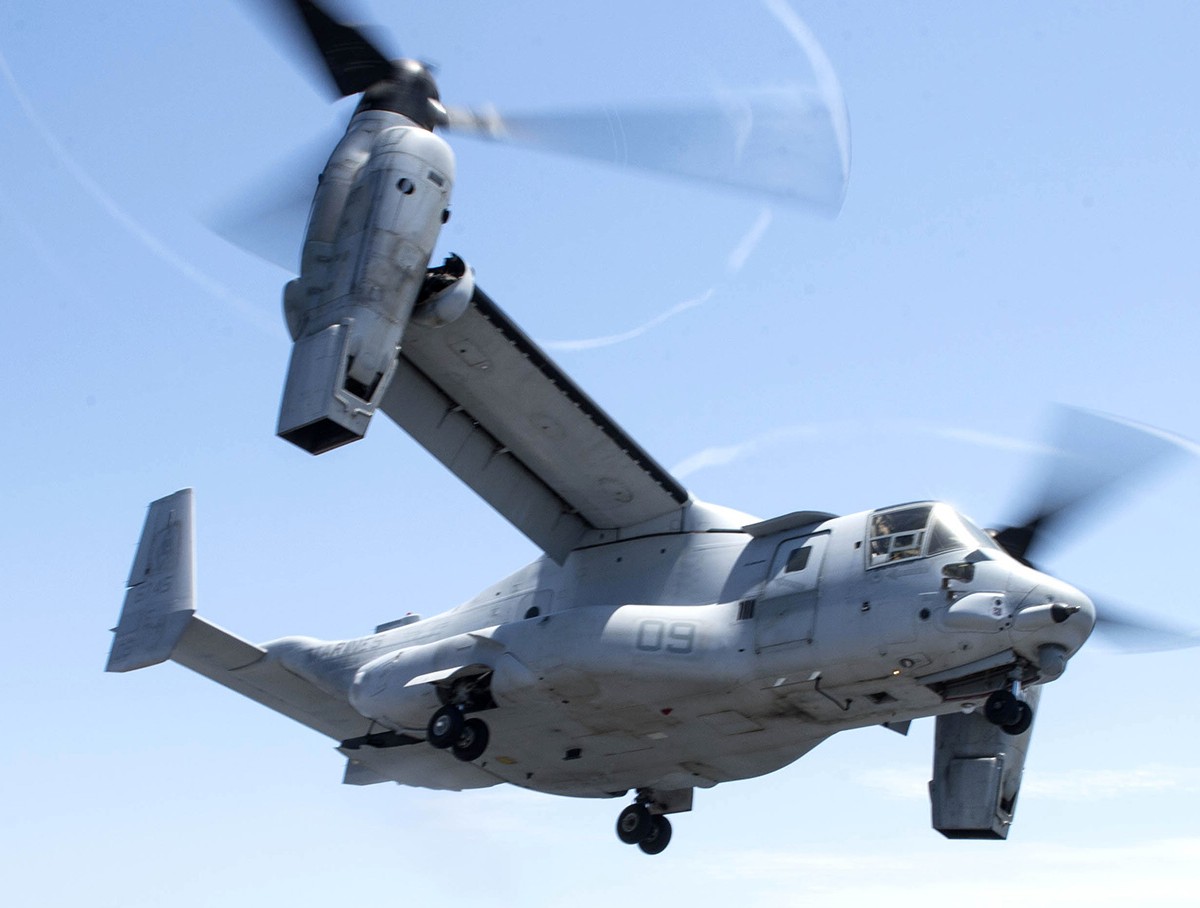 MV-22B Osprey (VMM-264) aboard USS Wasp (LHD 1) - May 2016 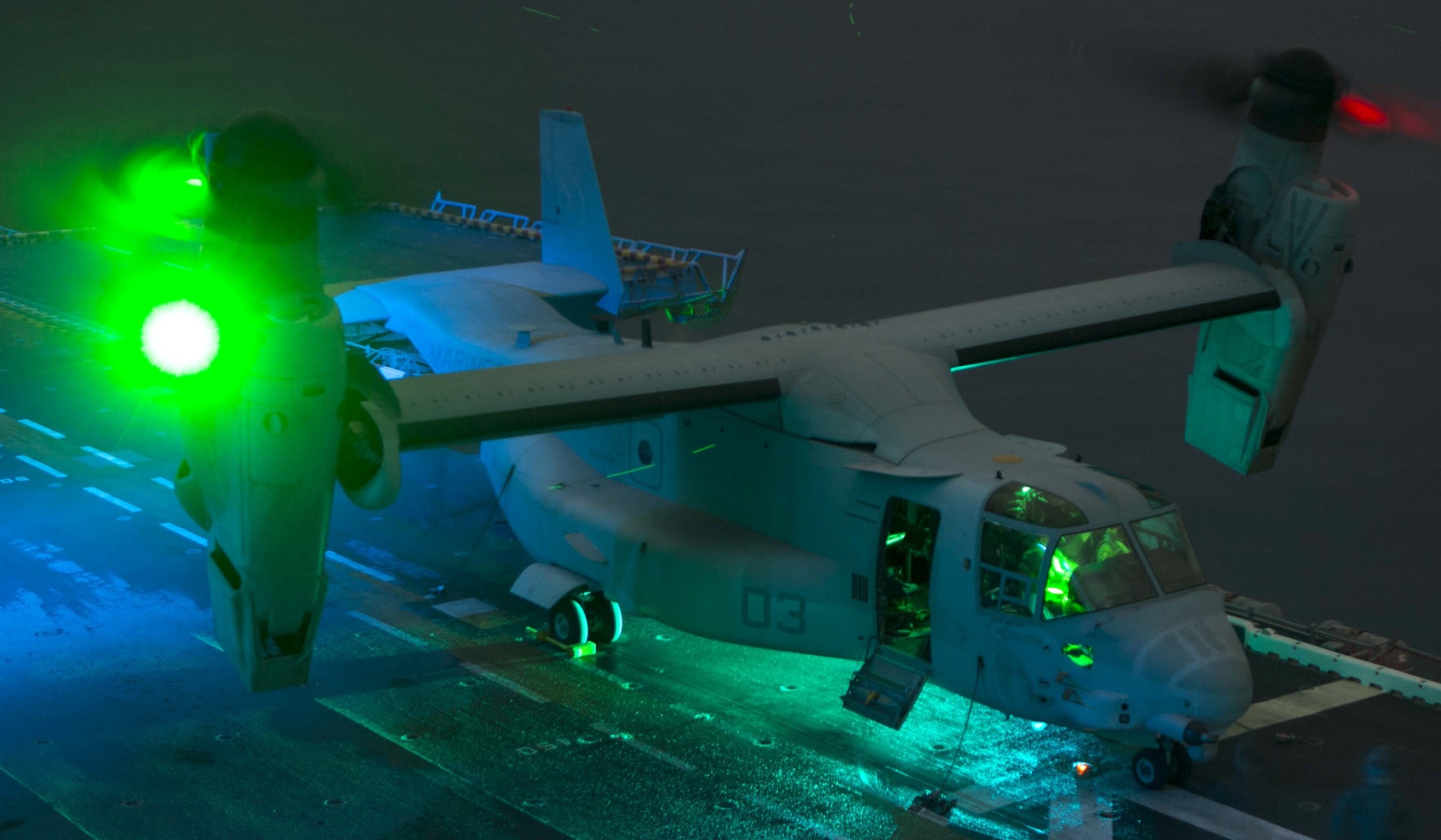 MV-22B Osprey (VMM-264) aboard USS Wasp (LHD 1) - May 2016 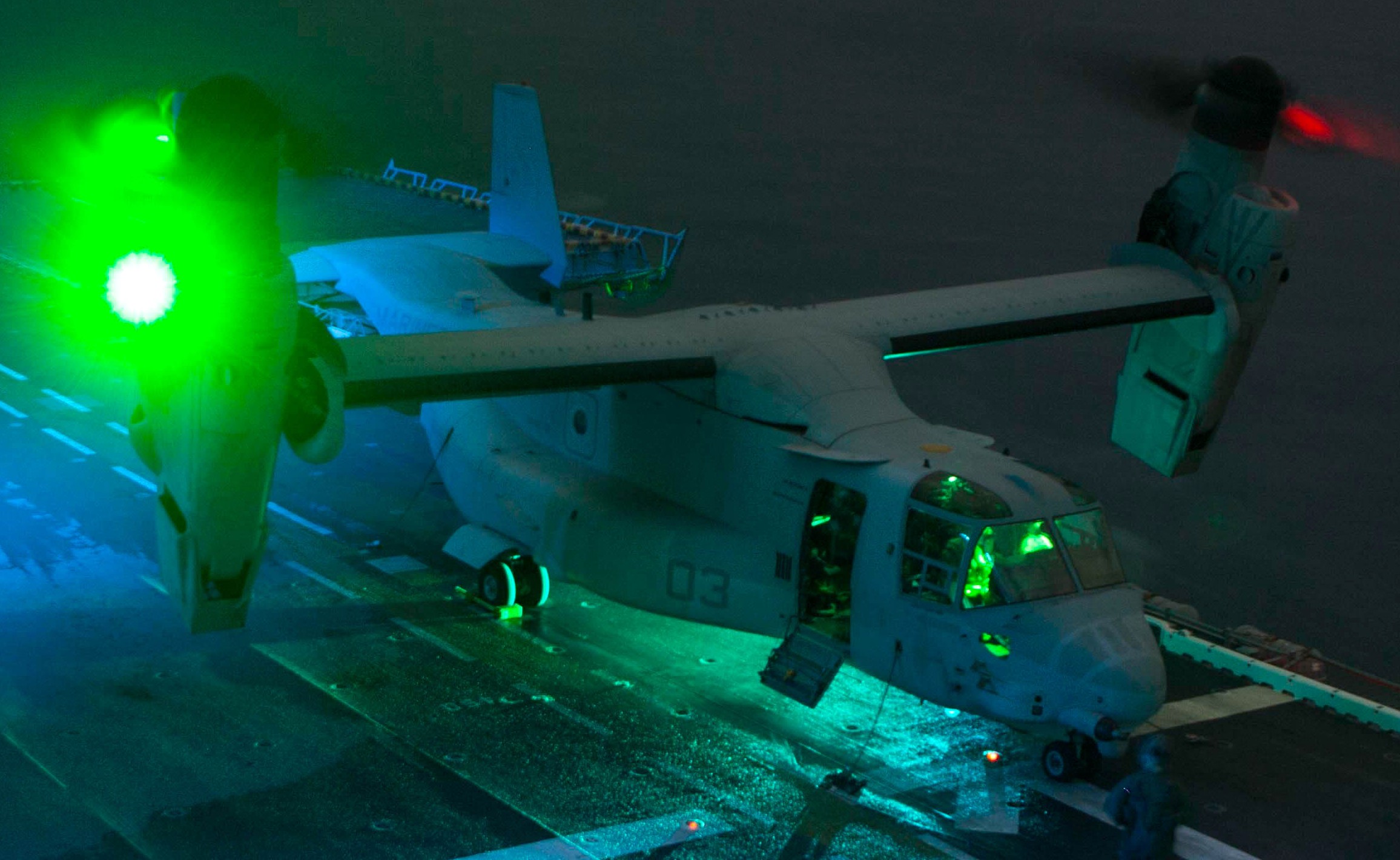 MV-22B Osprey (VMM-264) aboard USS Wasp (LHD 1) - May 2016 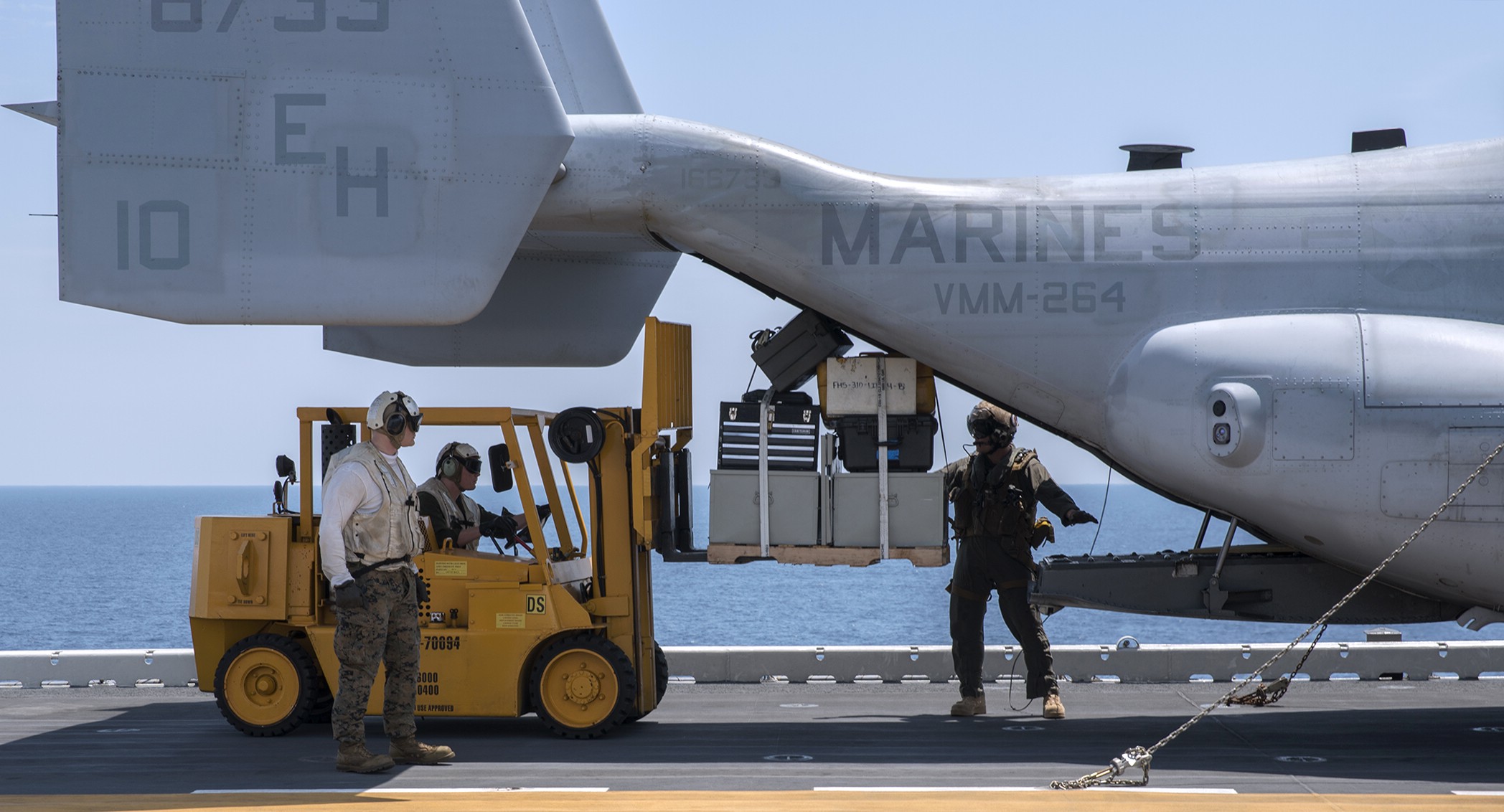 MV-22B Osprey (VMM-264) aboard USS Wasp (LHD 1) - May 2016 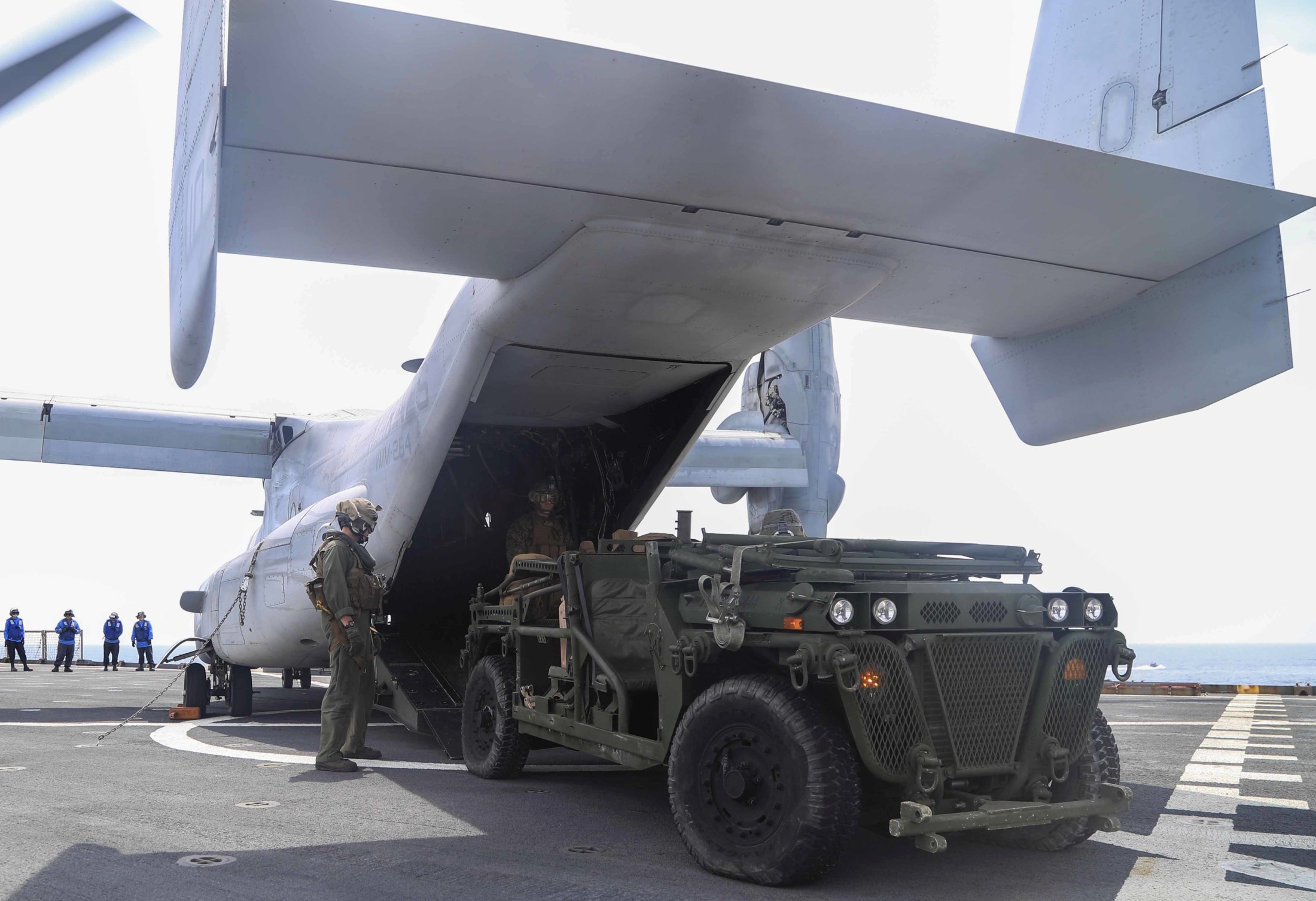 MV-22B Osprey (VMM-264) aboard USS Whidbey Island (LSD 41) - May 2016 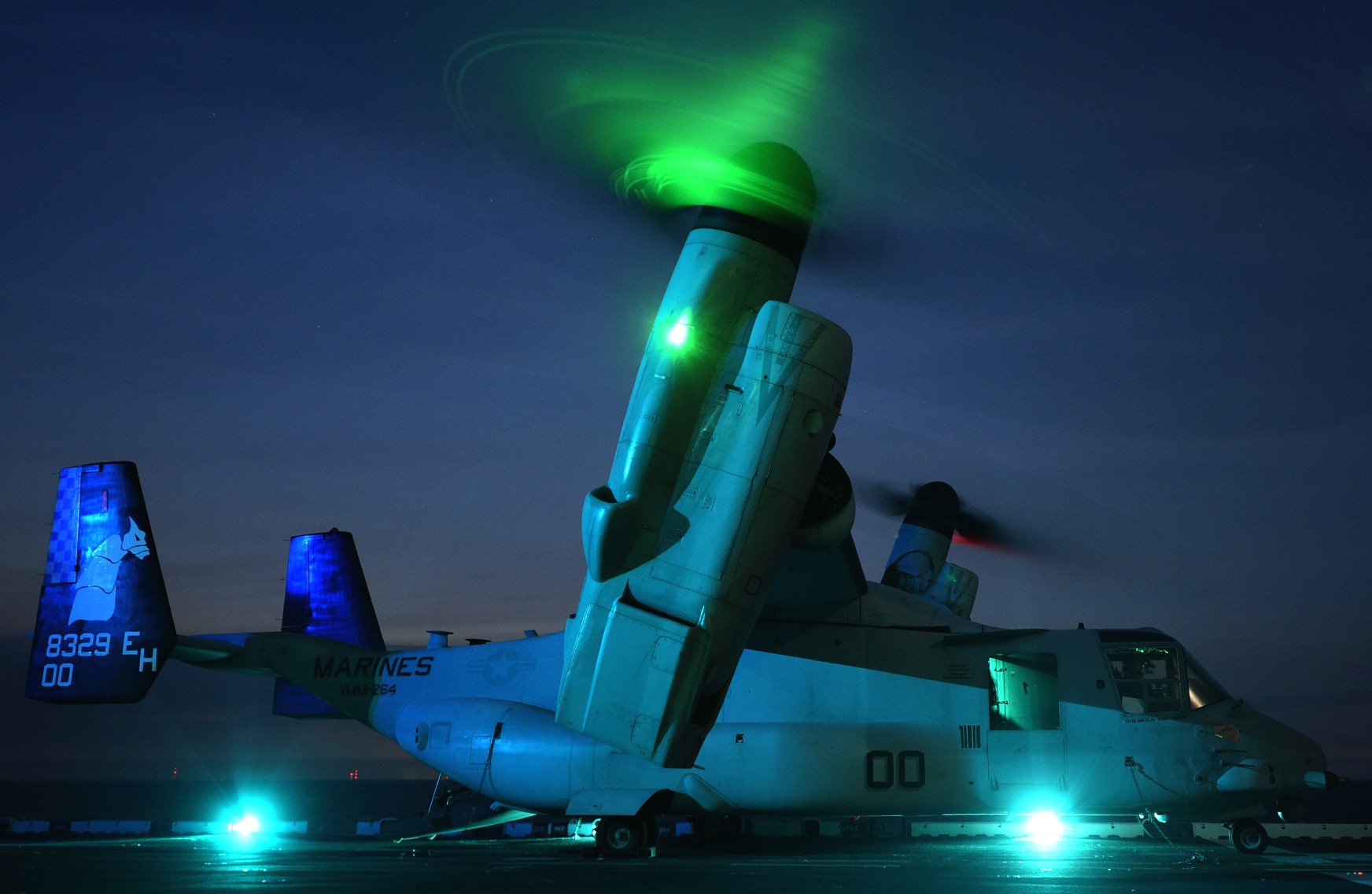 MV-22B Osprey (VMM-264) aboard USS Wasp (LHD 1) - April 2016 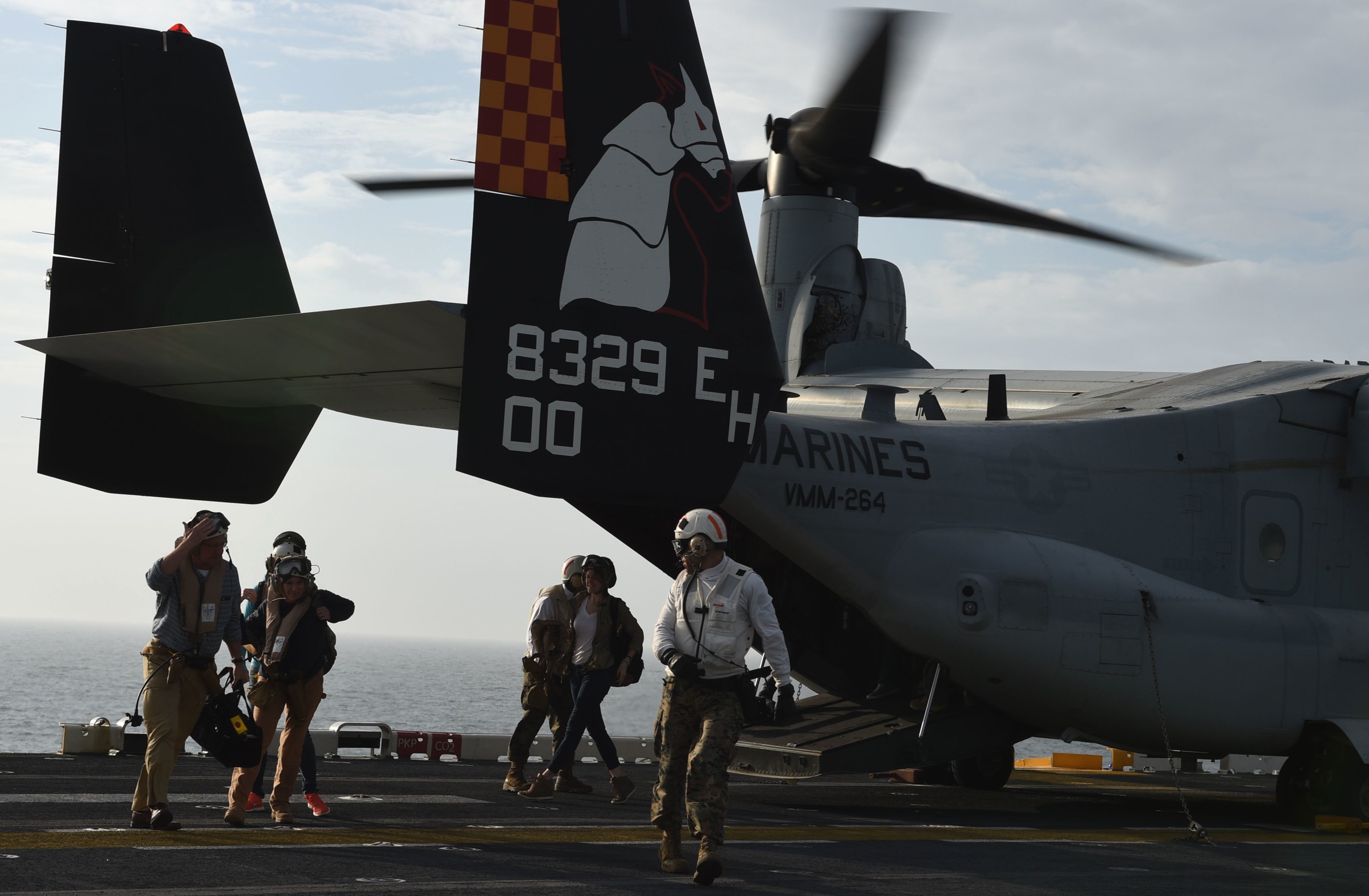 MV-22B Osprey (VMM-264) aboard USS Wasp (LHD 1) - April 2016 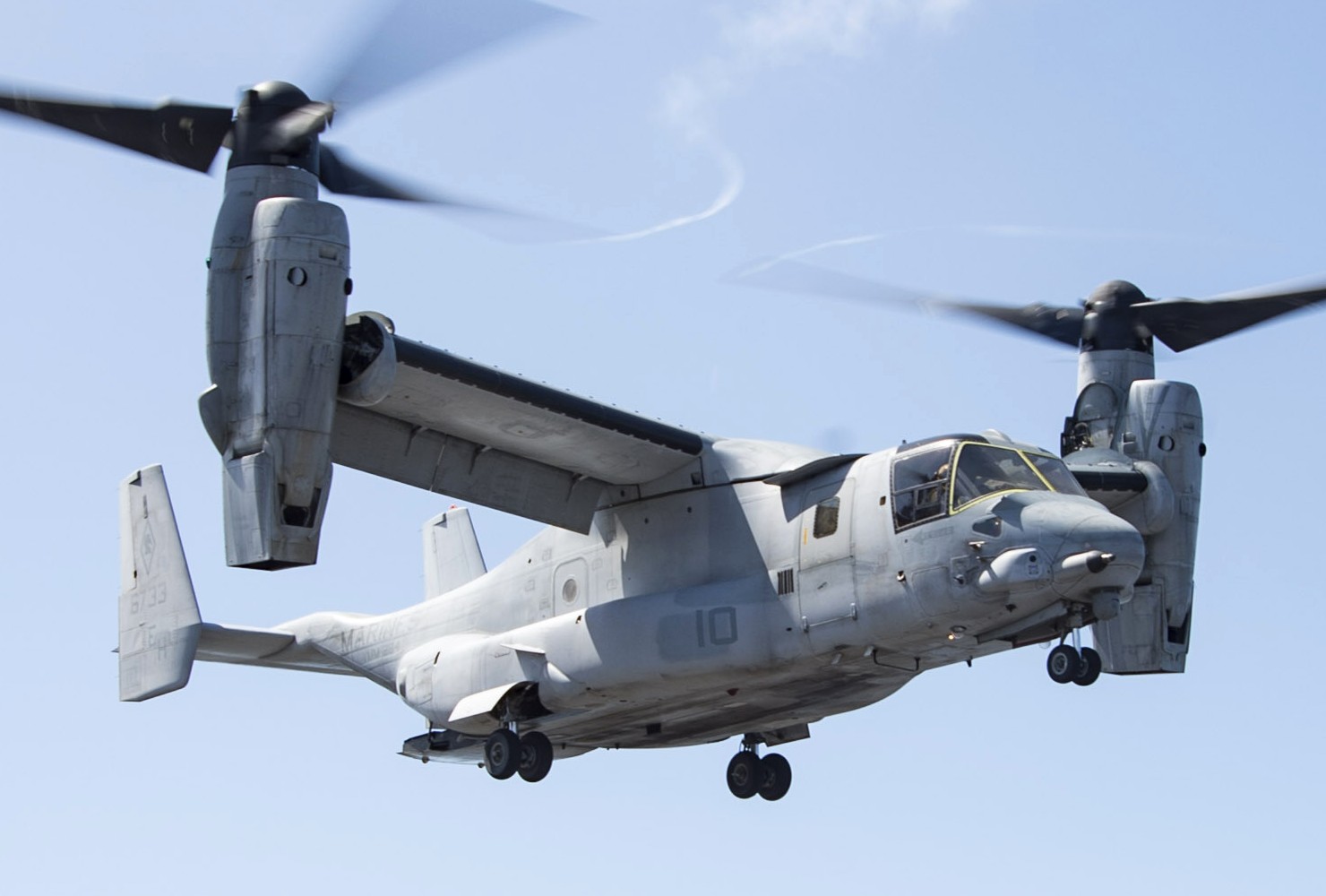 MV-22B Osprey (VMM-264) landing aboard USS Dwight D. Eisenhower (CVN 69) - April 2016 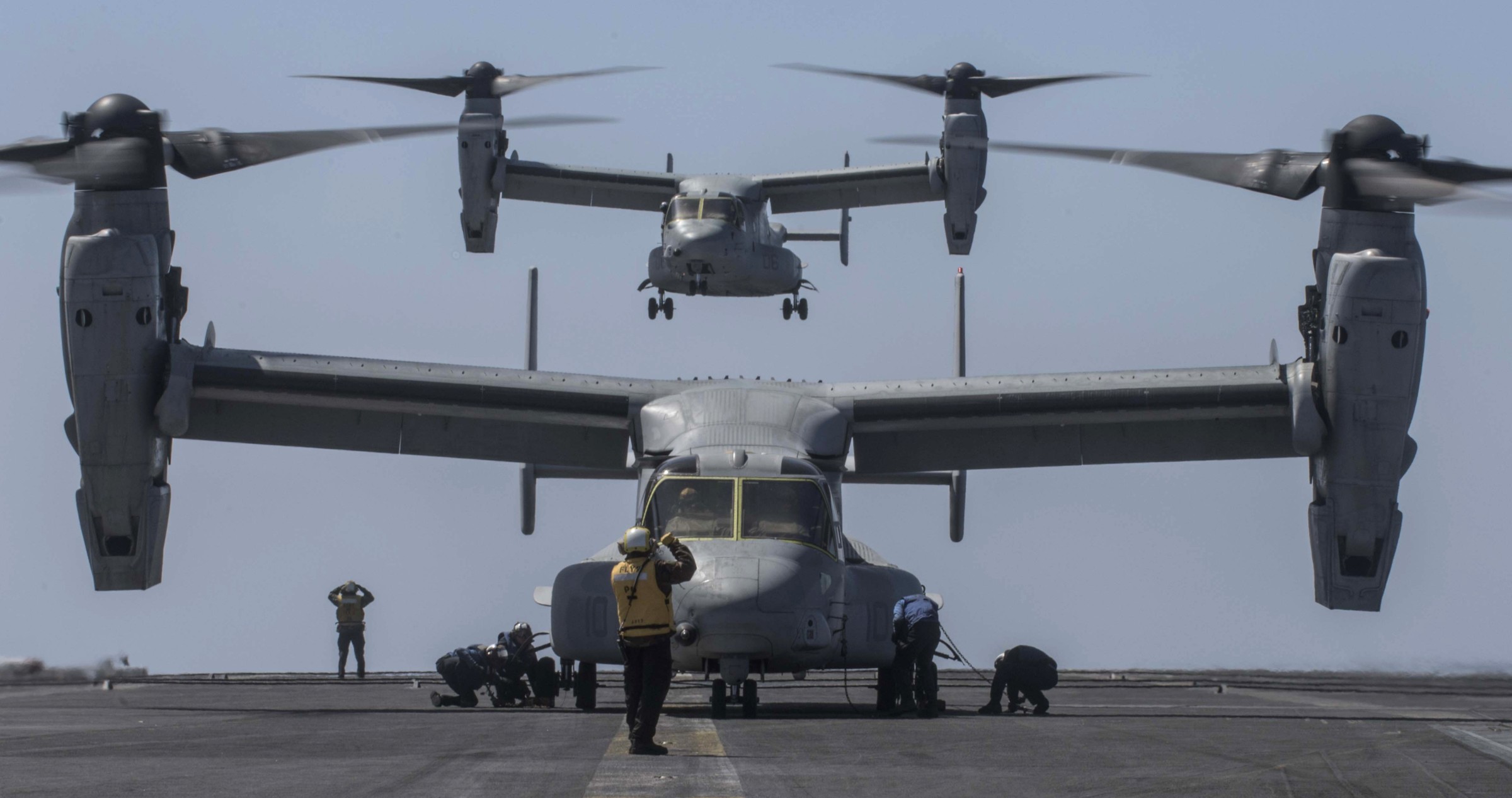 MV-22B Osprey (VMM-264) aboard USS Dwight D. Eisenhower (CVN 69) - April 2016 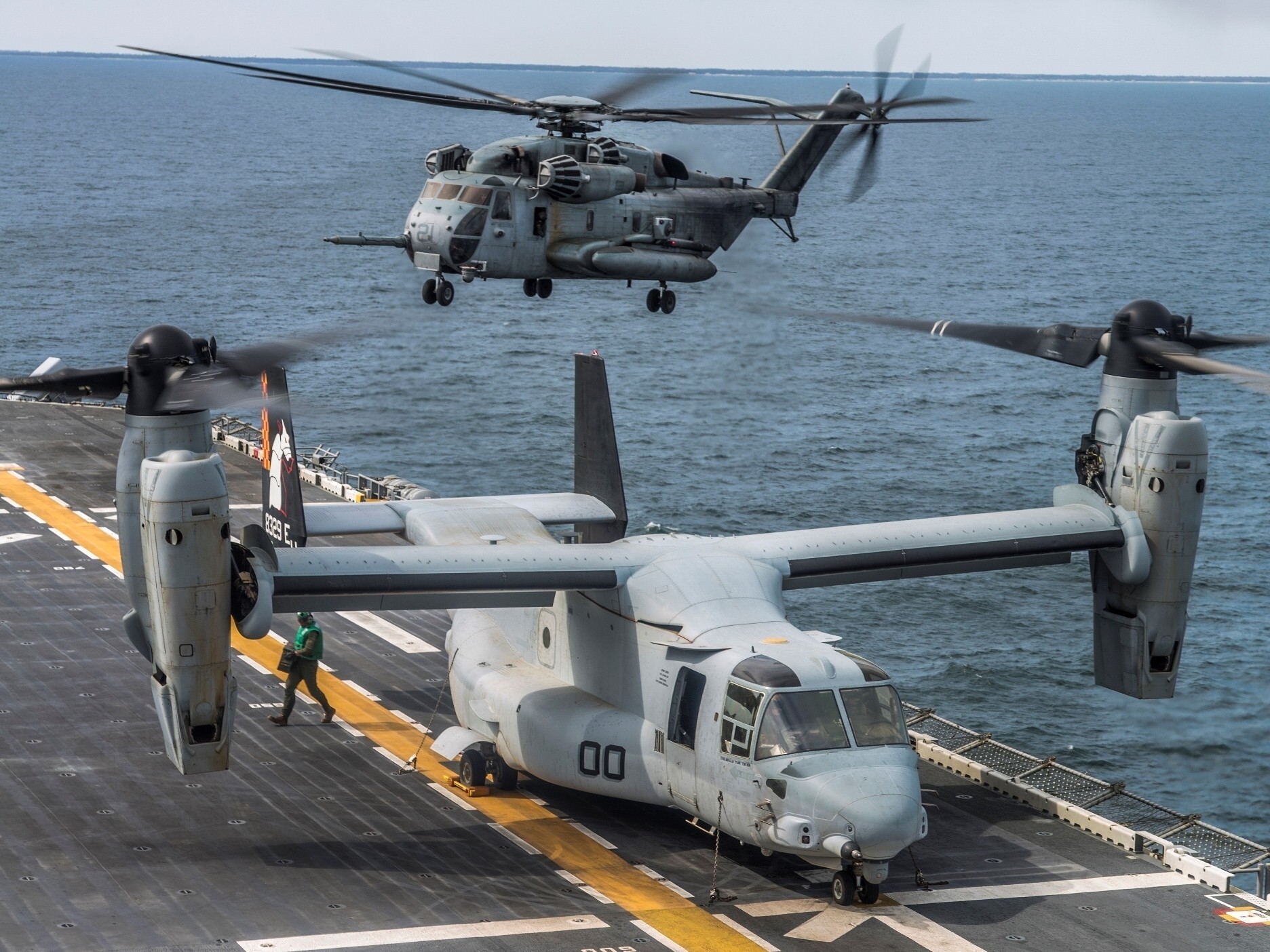 MV-22B Osprey (VMM-264) aboard USS Wasp (LHD 1) - March 2016 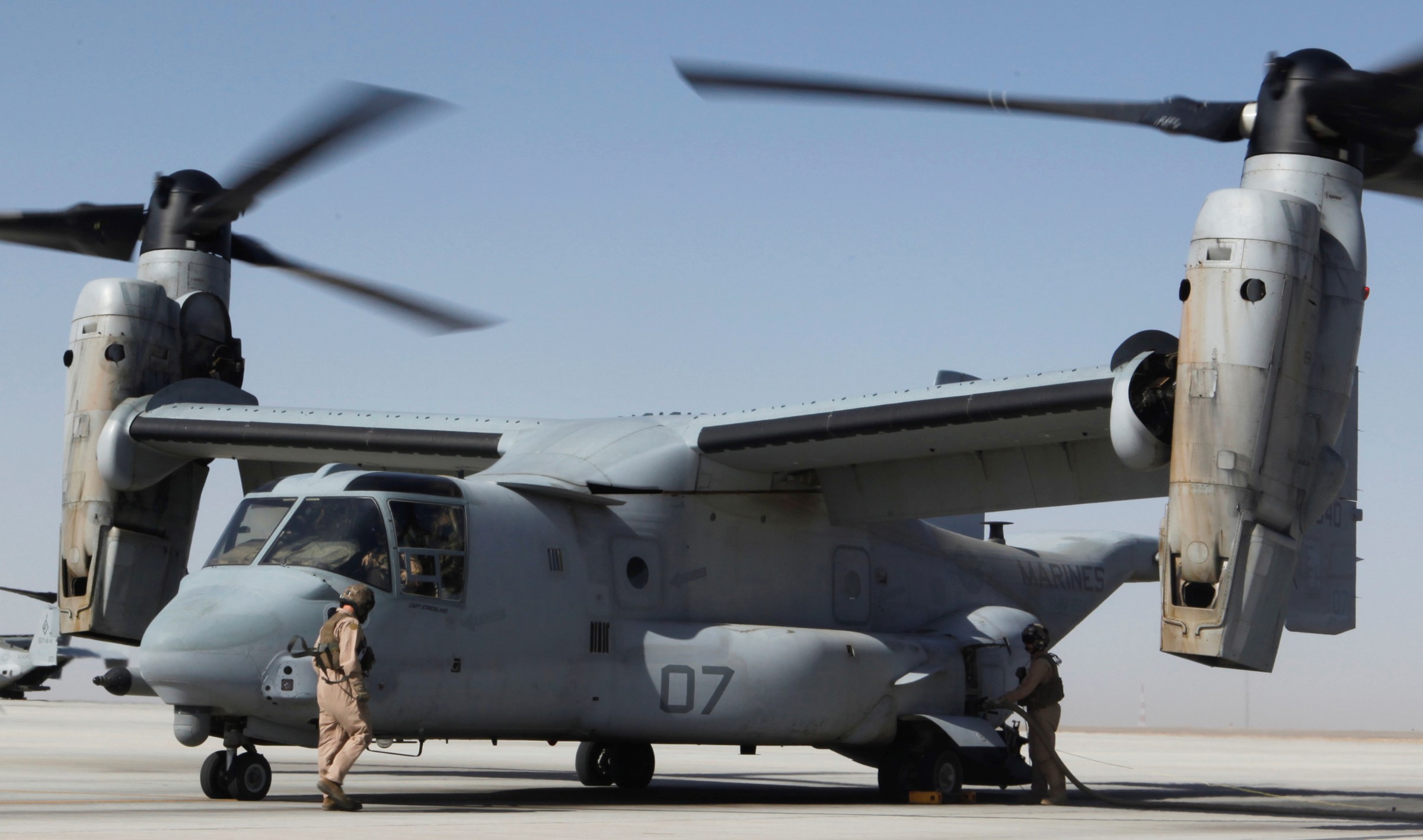 MV-22B Osprey (VMM-264) - Afghanistan - March 2013 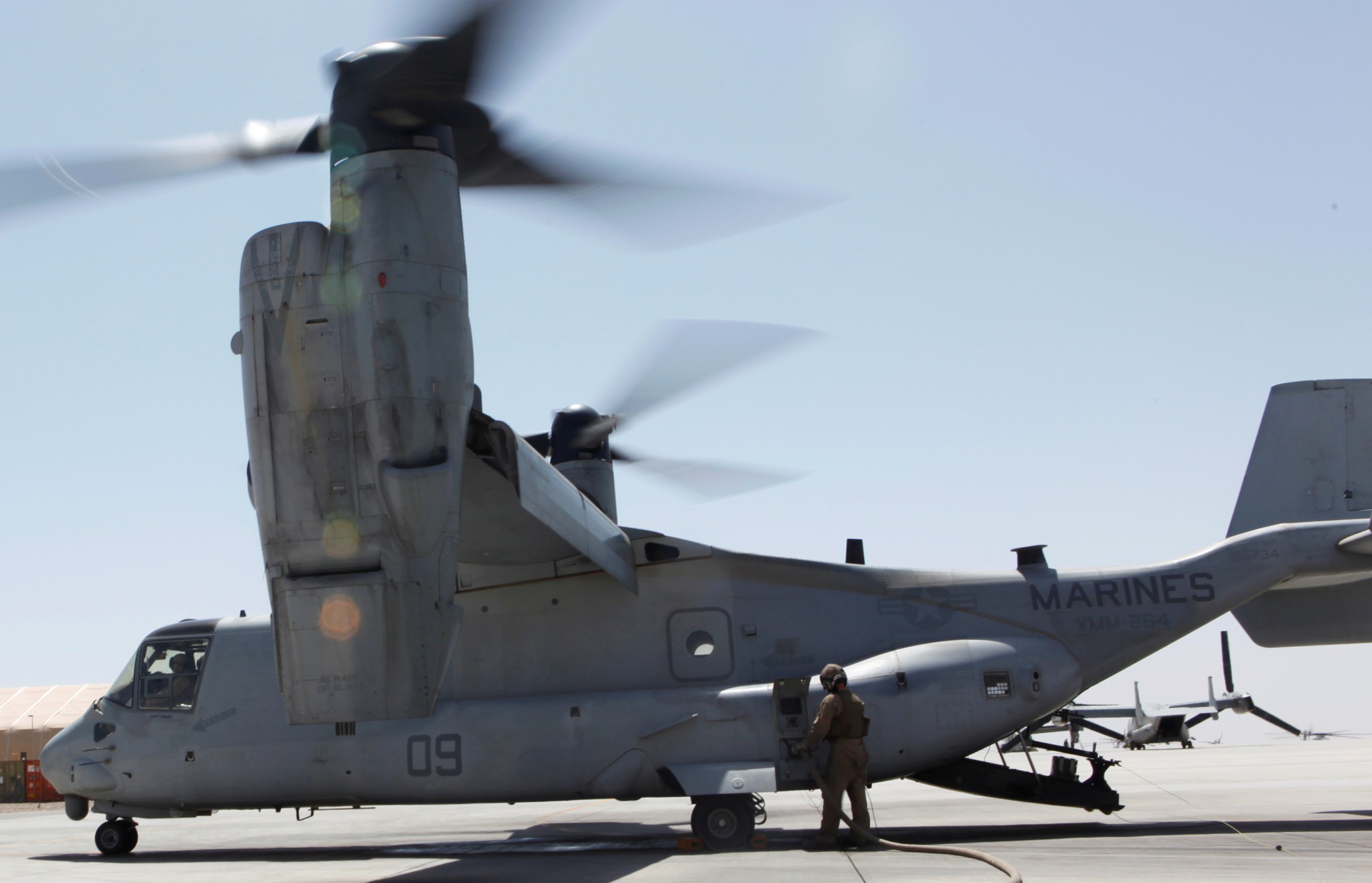 MV-22B Osprey (VMM-264) - Afghanistan - March 2013 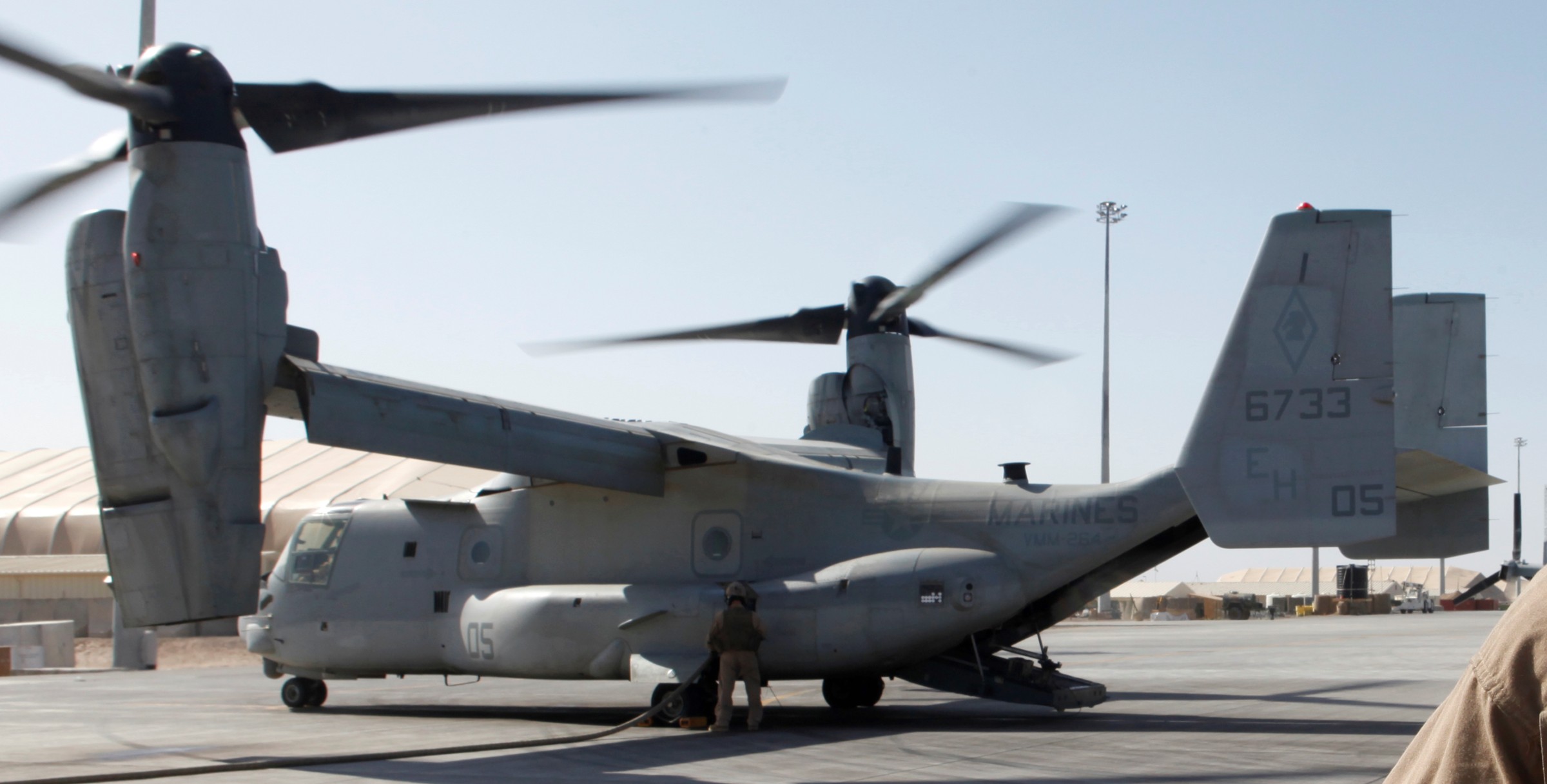 MV-22B Osprey (VMM-264) - Afghanistan - March 2013 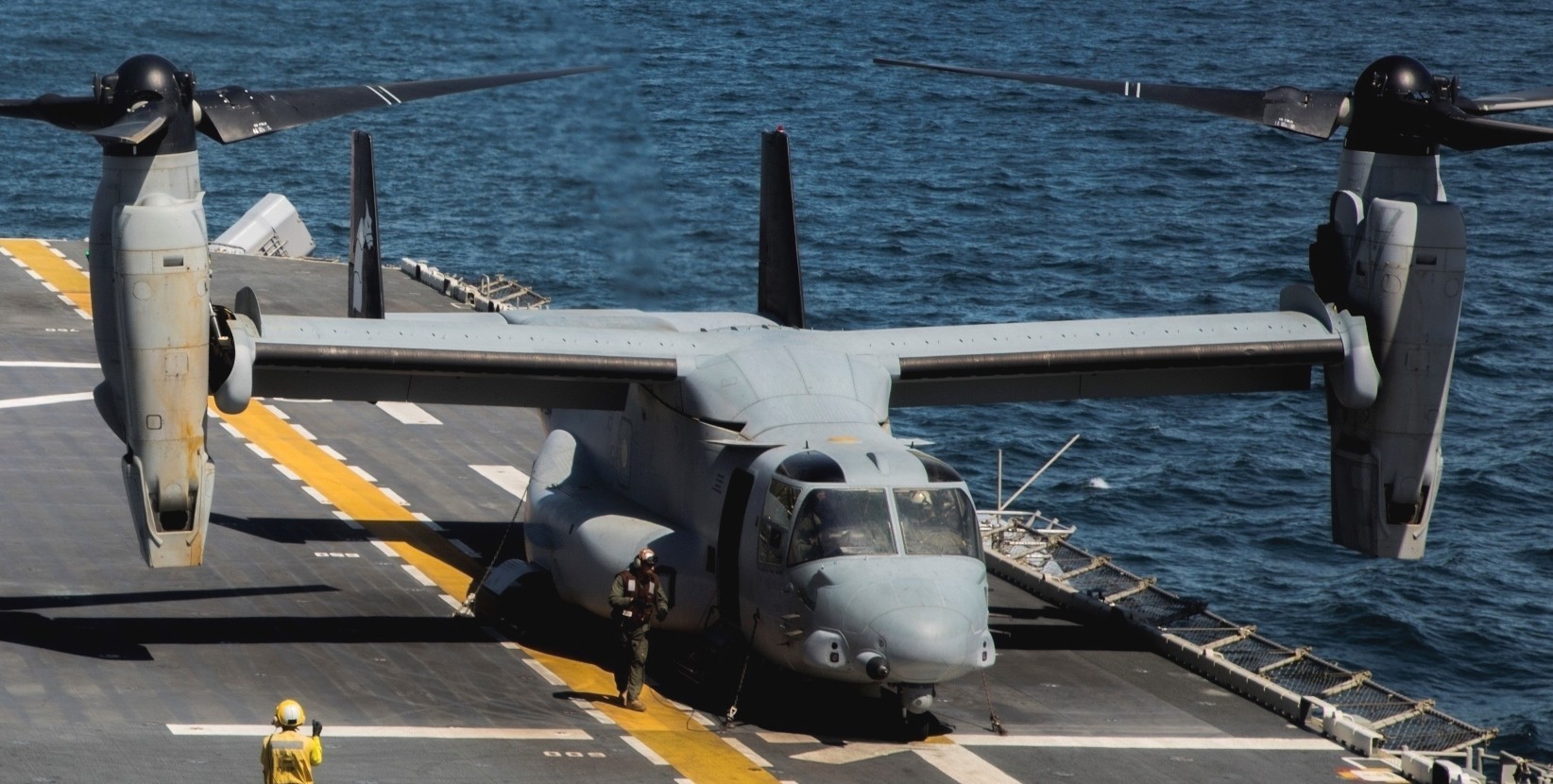 MV-22B Osprey (VMM-264) aboard USS Wasp (LHD 1) - March 2016 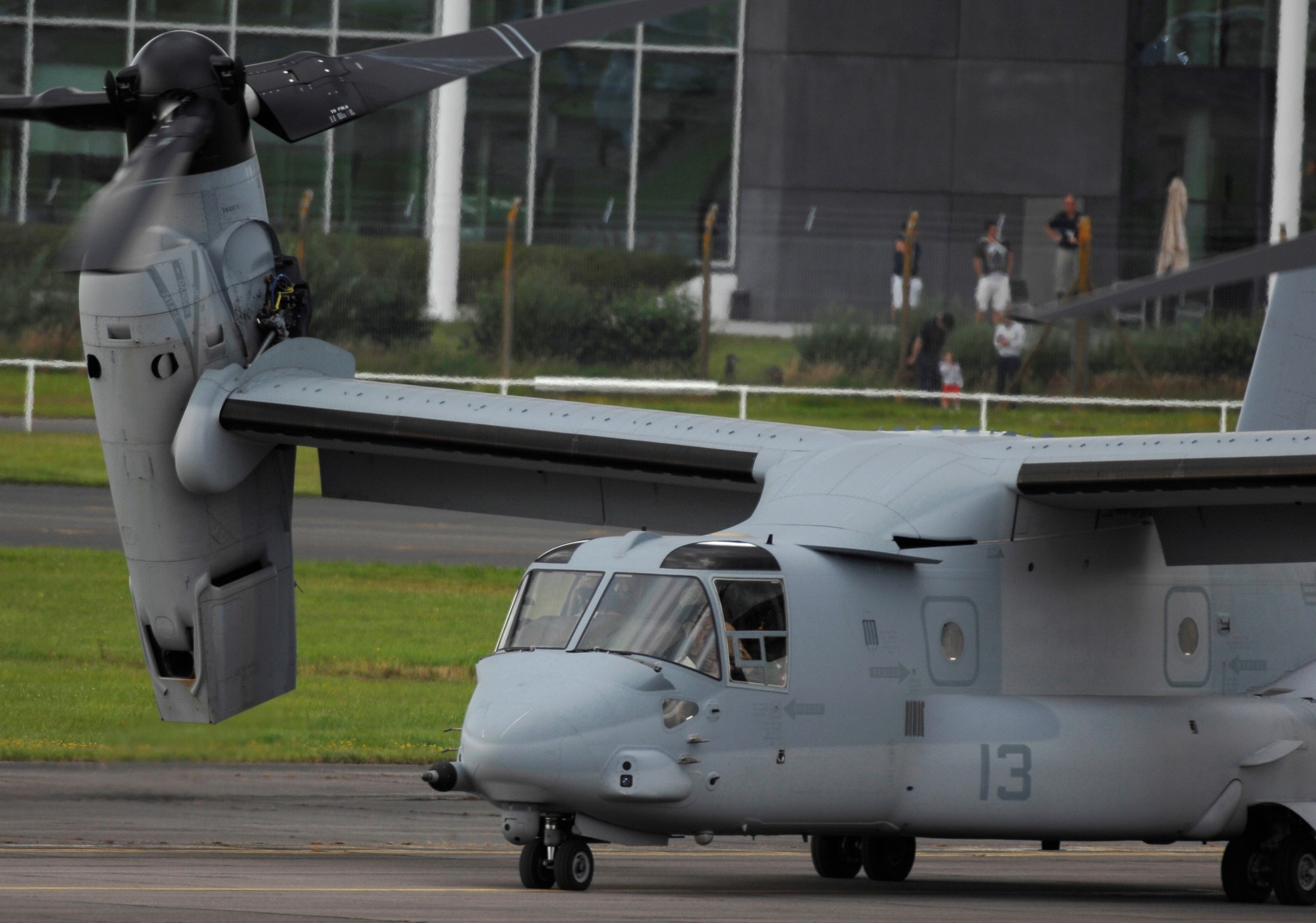 MV-22B Osprey (VMM-264) at Farnborough Airshow, U.K. - July 2012 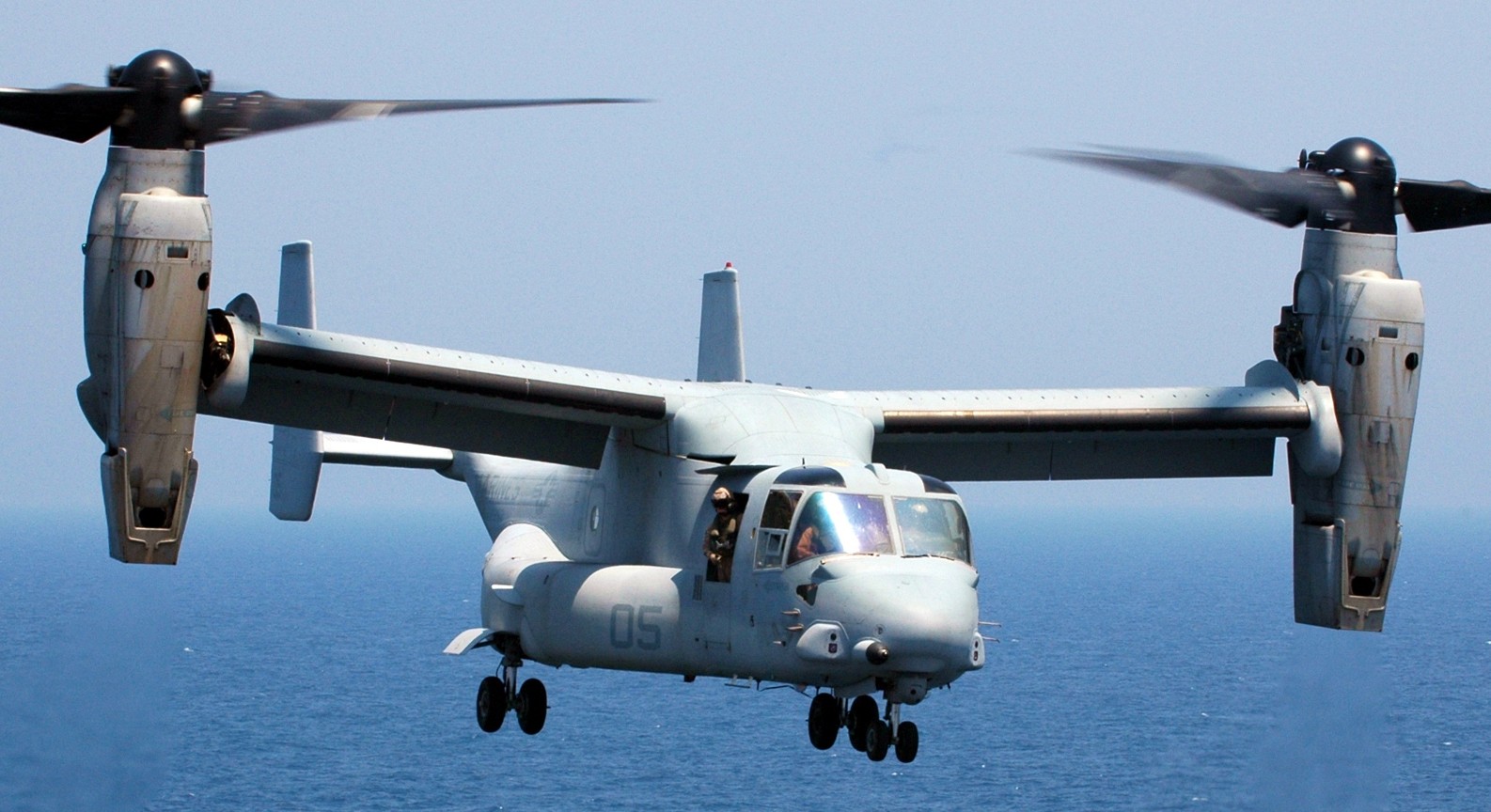 MV-22B Osprey (VMM-264) aboard USS Iwo Jima (LHD 7) - July 2008 |
|||||||
|
|
|||||||
|
Marine Medium Tiltrotor Squadron 264, the “Black Knights”, has a
long and prestigious history as an assault support squadron,
supporting joint and combined operations on behalf of the United
States Marine Corps for over 57 years. The Black Knights were activated on 30 June 1959 and were initially designated as Marine Medium Transportation Squadron Light 264, flying the Sikorsky UH-34 “Seahorse”, an assault helicopter used throughout the Vietnam War until the late 1960s. The squadron’s first use as an operational aviation element was for humanitarian evacuation and re-supply after Hurricane Hattie, a strong and deadly Category 5 tropical cyclone that impacted the South American country of Belize in the fall of 1961. This tasking was the first implementation of aviation assets in what is now a long-standing tradition of using Marine Corps forces to conduct humanitarian assistance operations. In February 1962, the Marine Corps re-designated the squadron as Marine Medium Helicopter Squadron 264 (HMM-264), the designation it would hold for over 40 years. At the end of April 1965, while deployed with the Sixth Marine Expeditionary Unit (MEU) aboard the USS Boxer, HMM-264 sailed for Santa Domingo, Dominican Republic to intervene in the Dominican Civil War. As part of Operation POWER PACK, the pilots and aircrew of HMM-264 conducted the first night heliborne assault into an unsecured landing zone during combat operations, in order to evacuate endangered United States citizens. The operation marked the first ship-to-shore heliborne lift of troops into a hostile objective area without pre-staged supporting units ashore to pave the way for further operations. Through the combined efforts of the US Navy and HMM-264, more than 600 civilians were evacuated from the island. Also a first, in May 1965, HMM-264 became the first Marine helicopter squadron to surpass 25,000 mishap free flight hours, a difficult achievement during a time fraught with aviation accidents across the Marine Corps. Over the next few years, the squadron continued to create a culture of high standards and professional excellence by reaching 30,000, 40,000, and then 50,000 mishap free flight hour milestones amid state-side and foreign operations across the spectrum of aviation. 1968 found the squadron retiring its last UH-34s, replacing them with the new Boeing-Vertol CH-46 “Sea Knight” aircraft, which would serve as the Marine Corps’ primary assault support platform until the introduction of the MV-22B “Osprey”. The 1970s and 1980s found the Black Knights of HMM-264 frequently deploying as the Aviation Combat Element (ACE) for various East Coast MEUs and Marine Amphibious Units (MAUs) based out of Camp Lejeune, North Carolina. While no combat operations occurred during the 1970’s for the squadron, HMM-264 participated in continuous joint and combined training exercises through numerous deployments. These deployments took the squadron over the Atlantic Ocean and across the Mediterranean Sea, spanning locations from Spain to Lebanon, supporting Landing Force Sixth Fleet (LF6F) tasking throughout. With growing civil unrest, culminating in the 23 October 1983 Multinational Force barracks bombing in Beirut, Lebanon, HMM-264, deploying with the newly designated 22d MAU and as a member of the peacekeeping force, assisted with humanitarian evacuation operations. Most notably, the squadron rescued numerous Lebanese civilians from the Chouf Mountains, where they had been stranded by heavy snowfall and mountain fighting between Druze and Christian Lebanese forces. The squadron received the Defense Transportation Safety Award, a Marine Corps Expeditionary Medal, and a Navy Unit Commendation for their services in Lebanon. Upon returning home, the same year, the Chief of Naval Operations (CNO) awarded HMM-264 the 1983 CNO Aviation Safety Award. The squadron’s deployment with the 22d MAU aboard the USS Nassau in September 1987, marked the first time the AV-8B “Harrier” and elements from the Marine Air Control Group (MACG) were employed as members of the ACE. The addition of these critical aviation assets to the ACE - and by extension the MEU – would become the standard for all deploying units as part of LF6F MEUs, and are still employed today. The 1990s were a busy time for the Black Knights of HMM-264, as the squadron continued its tradition of operational excellence through near-continuous deployments in support of LF6F. Upon completion of Sixth Fleet tasking in January 1990, the squadron supported Operation TOP KICK – which culminated in a multinational anti-drug summit in Cartagena, Colombia - from 6 – 16 February 1990. The squadron provided aviation-based personnel lift capabilities throughout the exercise and was awarded the Joint Meritorious Unit Citation for the operation. At the beginning of 1991, the squadron deployed as the ACE for the 24th MEU [Special Operations Capable (SOC)] aboard the USS Guadalcanal. While preparing for tasking in support of Operation DESERT STORM, the squadron was diverted to Iskendrun, Turkey where it participated in Operation PROVIDE COMFORT for over 90 days. Acting as the lead aviation element in a coalition effort, HMM-264 flew more than 1,000 hours and delivered more than 900,000 pounds of relief supplies to isolated Kurdish refugees in northern Iraq and Turkey. For the squadron’s efforts, they received the Joint Meritorious Unit Citation, Southwest Asia Service Medal with Bronze Star, and the Humanitarian Service Medal. In 1993, the Black Knights deployed on the USS Saipan to conduct humanitarian relief operations in Bosnia and Herzegovina during the Yugoslav Wars that occurred between 1992 and 1996. The Marines of HMM-264 supported Operations PROVIDE PROMISE, DENY FLIGHT, and SHARP GUARD, providing humanitarian support, enforcing United Nations no-fly zones, and conducting aviation-based armed reconnaissance – assisting in the naval blockade of Yugoslavia. June of 1994 marked the 35th anniversary of the Black Knights. By August of that year, the squadron had composited and embarked aboard the USS Wasp with Special Purpose Marine Air-Ground Task Force (SPMAGTF) Caribbean. The USS Wasp immediately moved south to conduct Operations SUPPORT DEMOCRACY and UPHOLD DEMOCRACY in the country of Haiti, which was embroiled in riots and martial law resulting from a recent coup d’état. On 20 September 1994, HMM-264 (Reinforced) [HMM-264 (REIN)] facilitated the first Marine Corps landing in Haiti since the early 1900s, by participating in a heliborne assault on the Cap Haitian Airport and port facilities. Over the next month, the squadron supported a Joint Task Force through a number of mission profiles, including raids, logistical support, humanitarian assistance, and medical evacuations (MEDEVAC). The squadron returned from Haiti in late October 1994, receiving the Armed Forces Expeditionary Medal and Humanitarian Service Medal for their time there. After conducting a quick turn-around, the squadron prepared for deployment with the 26th MEU in the spring of 1995. While afloat in the Sixth Fleet area of responsibility (AOR) the Black Knights returned to Bosnia-Herzegovina, Yugoslavia, conducting 99 fixed-wing and 36 rotary-wing sorties for Operations DENY FLIGHT and DECISIVE ENDEAVOR. This would not be the last time that HMM-264 provided aviation assets to support operations in Yugoslavia; in 1998 they offered the first North Atlantic Treaty Alliance (NATO) controlled Tactical Air (TACAIR) “Harriers” used to overfly the Bosnia area since the Dayton Peace Accords, signed near the end of the squadron’s 1995 deployment with the 26th MEU. In June of 1996, with less than three days of notification, HMM-264 deployed with SPMAGTF Liberia to the West African city of Monrovia, Liberia, conducting assault support missions and providing embassy reinforcement, security, and resupply. The squadron, sending a detachment of four CH-46E and two UH-1N helicopters, operated out of Freetown, Sierra Leone, and conducted daily operations in austere conditions, overcoming the logistical challenges of long-distance operations across the climes of Africa. The squadron was awarded a Humanitarian Service Medal and Joint Meritorious Commendation Medal for their Liberian operations. HMM-264 would return to Africa almost 10 and then 20 years later, as a tiltrotor squadron, to conduct similar operations in the area. The squadron returned from their 1998 deployment – dominated by NATO led Exercise DYNAMIC RESPONSE, near Bosnia – with three unit citations for their efforts in Bosnia, including the Armed Forces Service Medal, Armed Forces Expeditionary Medal, and Meritorious Unit Commendation. Upon return, the squadron conducted hurricane evacuations in advance of approaching Hurricane Floyd, assisting the Federal Emergency Management Agency (FEMA) and the citizens of North Carolina by facilitating relief missions, resupply efforts, and the movement of congressional members and other distinguished individuals throughout the disaster area. Additionally, HMM-264 was awarded the Marine Corps Aviation Association, Marine Medium Helicopter Squadron of the Year award for 1998. Operationally, the Black Knights ended the millennia, in December of 1999, by providing pilots, aircrew, and aircraft (CH-46Es) to support the MV-22 Operational Test Evaluation by conducting concurrent shipboard operations for interoperability training aboard the USS Saipan, helping to prove the operational readiness of the MV-22 – the airframe that would eventually take the place of the aging “Sea Knight” airframe. In July 2000, HMM-264 again deployed with the 26th MEU, this time aboard the USS Saipan in support of Operation AURORA LIGHTNING during a tense election crisis in the Federal Republic of Yugoslavia. Following the terrorist attacks on the World Trade Center in New York City on 11 September 2001, the squadron, along with the rest of the Marine Corps, joined the Global War on Terror. From 5 March 2003 to 24 October 2003, HMM-264 (REIN) embarked for deployment aboard the newly operational USS Iwo Jima with the 26th MEU. During these eight-months abroad, the squadron conducted operations in Northern Iraq in support of Operation IRAQI FREEDOM; assisted with Operation ENDURING FREEDOM in the Persian Gulf; spent time conducting exercises in Djibouti, Africa; and executed tasking in Liberia, helping to stabilize the post-civil war stricken nation. During the last half of April 2003, while still deployed with the 26th MEU, the squadron detached six CH-46E and six CH-53E helicopters and flew them over 495 miles from the USS Iwo Jima in the Mediterranean Sea into Irbil and Mosul Iraq. At the time, this flight was the longest self-deployed flight to a land-based site from any MEU. In October, the Black Knights returned home, having conducted tasking in more than four countries and received the newly created Global War on Terror (Expeditionary) Medal for operations in Iraq, the Persian Gulf, and the Horn of Africa; as well as the Humanitarian Service Medal for operations in Liberia. In January of 2005, the squadron again departed for Iraq, this time in direct support of Operation IRAQI FREEDOM, basing out of Al Asad and conducting Casualty Evacuation (CASEVAC), VIP transport, assault support operations, and participating in Operation MATADOR – a military offensive against insurgent positions in Iraq’s northwestern Anbar province. Following this deployment, the squadron tapped a small detachment to leave North Carolina and assist the city of New Orleans, Louisiana, in relief efforts following Hurricane Katrina. Following deployment as the ACE with the 26th MEU in 2007 and 2008 – concurrently, the final 26th MEU deployments with East Coast CH-46E squadrons – HMM-264 completed a full transfer of aircraft, trading the CH-46E “Sea Knight” with the MV-22B “Osprey”. With the new influx of MV-22B pilots, aircrew, and aircraft, the squadron was re-designated Marine Medium Tiltrotor Squadron 264 (VMM-264), which it remains to this day. Since achieving operational squadron status with the MV-22B, VMM-264 has conducted two deployments in support of Operation ENDURING FREEDOM. The first was in December of 2010, and primarily dedicated to combat assault transport and cobalt logistics flights across Afghanistan. The deployment also resulted in the reaching of a milestone for the MV-22B community, wherein an aircraft piloted by Black Knight aircrew broke the 100,000 flight-hour mark for the “Osprey” platform as a whole, on 10 February 2011. The squadron again deployed in January 2013, basing operations out of Camp Bastion, Helmand Province, Afghanistan. VMM-264 once again conducted primarily combat assault transport missions involving movement of personnel and cargo to and from various Forward Operating Bases (FOBs) in austere conditions around the country. During this time, the squadron also stood alert for Tactical Recovery of Aircraft and Personnel (TRAP) and executed numerous direct action air assaults with joint and combined forces, including aerial interdiction force (AIF) missions throughout southwest Afghanistan. In 2014, in response to the increased spread of the Ebola Virus in West Africa, the United States began Operation UNITED ASSISTANCE. In October 2014, while deployed under SPMAGTF Crisis Response - Africa, and concurrently operating out of Moron, Spain and standing alerts in Sigonella, Italy for contingency tasking on the northern coast of Libya, the squadron was tasked to conduct airlift missions in Liberia. VMM-264 self-deployed with a small detachment of MV-22B and necessary aircrew and support personnel to Monrovia, Liberia, filling a critical logistics gap until other United States military assets could arrive. Within 72 hours of arriving, VMM-264 was conducting flight operations to support responses to viral outbreaks, moving medical training teams, Non-Governmental Organization (NGO) personnel, and a wide variety of medical and logistical supplies across Liberia. During this time, the squadron was privileged to transport numerous dignitaries around the country, to include the US Ambassador to Liberia, the US Ambassador to the United Nations, the President of Liberia, and the Chief of Staff of the Armed Forces of Liberia. On 4 December 2014, the Black Knights re-aggregated their Liberian detachment Marines, having successfully provided badly needed assistance to Liberian nationals, NGOs, and US military aid workers providing support to the Ebola-stricken country. VMM-264 returned from their SPMAGTF Crisis Response - Africa deployment in February of 2015, turning around a short ten months later to begin pre-deployment workups for the 22d MEU. In December of 2015, the Black Knights once again reinforced, marking the first time the squadron had composited as an ACE since its transition to the MV-22B. This deployment would also be the first time that a MEU would deploy with and employ the RQ-21A “Blackjack” unmanned aircraft. This asset gave the MEU Commander real-time, full-motion video of the battlespace, and would be organic to the MEU. After a six month workup period, VMM-264 (REIN) deployed with the 22d MEU aboard the USS Wasp and USS San Antonio. Within a month, the squadron was thrust into the middle of conflict off the coast of Libya. From 1 August 2016 to the squadron’s re-deployment in December 2016, VMM-264 directly supported and conducted combat operations in Libya, during Operation ODYSSEY LIGHTNING. In total, the squadron flew over 1280 combat flight hours and conducted over 700 sorties for the operation. The Black Knight AV-8B and H-1 detachments expended over 285 bombs and 160 Hellfire missiles, prosecuting countless Islamic State of Iraq and the Levant – Libya (ISIL-L) targets in the vicinity of Sirte, Libya. These numbers were the largest expenditures of ordnance employed from MEU-based shipping in the history of the Marine Corps. Concurrent with combat operations in Libya, the USS San Antonio’s CH-53E and RQ-21A detachments conducted international training exercises with Israel and Oman, as well as stood TRAP alerts in the Red Sea and Gulf of Aden. After a successful deployment, VMM-264 (REIN) returned to Jacksonville, North Carolina in mid-December 2016, to prepare for future tasking. source: VMM-264 website |
|||||||
|
|
|||||||
|
|
|||||||
|
patches & more |
|||||||
|
|
|||||||
| | seaforces.org | US Marine Corps Air units start page | | |||||||
